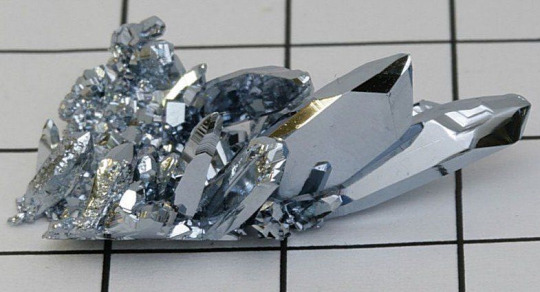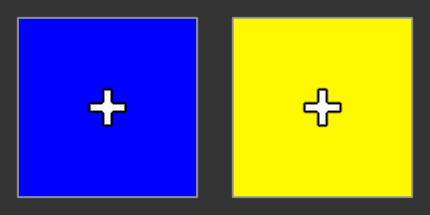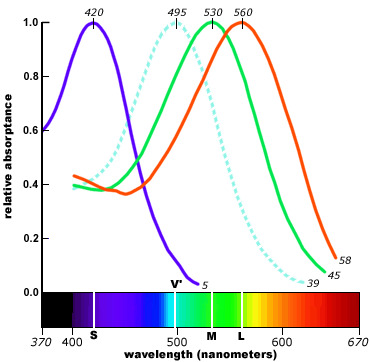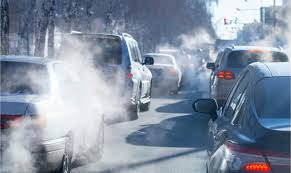#which is just the most extreme and visible example of this phenomenon
Explore tagged Tumblr posts
Text
What is it about men and the impulse they have when see a lovely woman who is happy and thriving to take her away from that, crush her spirit, break her dreams and have her participate in her own destruction?
#yeah this is about ballerina farm#which is just the most extreme and visible example of this phenomenon#but I’ve seen it in men from all walks of life#they court and marry a woman they purport to love#while bending all their will and guile to destroying her spirit her dreams her goals#cyndi is right#some boys do take a beautiful girl and hide her away from the rest of the world#beware#walk in the sun my loves
9 notes
·
View notes
Link
0 notes
Text
Why we need Global warming

The Important Significance of Addressing Global Warming
Global warming, a phenomenon resulting from the increased concentrations of greenhouse gases in the environment, is one of the most pressing problems of our time. The effects of global warming are profound, impacting not simply the environment but likewise the economic, social, and political stability of nations worldwide. The value of addressing global warming can not be overstated, as it presents difficulties that are adjoined and significant, requiring a concerted effort from all sectors of society.
# Environmental Impact of Global Warming
The environmental effects of global warming are perhaps the most visible and instant. As global temperature levels increase, we are witnessing a cascade of environmental modifications that threaten the fragile balance of ecosystems across the planet. One of the most worrying results is the melting of ice caps and glaciers, which adds to rising sea levels. This increase in water level postures a significant risk to seaside neighborhoods, causing increased flooding, erosion, and in some cases, the displacement of entire populations.
Moreover, global warming has been linked to more extreme weather condition occasions, consisting of cyclones, dry spells, and heatwaves. These occasions not just cause widespread destruction but also disrupt ecosystems and the biodiversity that depends on them. The loss of biodiversity is a crucial problem, as it weakens the durability of communities and their capability to adjust to altering conditions. For example, the decrease of coral reefs, frequently referred to as the “jungles of the sea,” due to rising ocean temperatures and acidification, has terrible effects on marine life and the livelihoods of millions of people who depend on these ecosystems. The disruption of natural systems also activates feedback loops that worsen global warming. For instance, the melting of permafrost in the Arctic launches big amounts of methane, a potent greenhouse gas, into the atmosphere. This release of methane accelerates global warming, developing a vicious circle that is tough to break. The significance of halting and reversing these trends is vital to maintaining the planet’s environments and the services they offer, such as clean air, water, and food. Economic Impact of Global Warming
The economic implications of global warming are similarly substantial. The increased frequency and seriousness of natural disasters, such as floods, typhoons, and wildfires, result in significant financial losses. These disasters damage infrastructure, disrupt supply chains, and cause expensive recovery efforts. For instance, the damage brought on by typhoons in the United States alone has totaled up to billions of dollars in recent years, straining local and nationwide economies. In addition to the direct costs of natural disasters, global warming also has indirect economic results. Farming, a sector heavily depending on stable climatic conditions, is especially vulnerable. Modifications in temperature level, precipitation patterns, and the frequency of severe weather condition events can cause decreased crop yields, threatening food security and driving up costs. This, in turn, affects the livelihoods of farmers and the price of food for consumers, especially in developing countries where farming plays a crucial function in the economy.
Additionally, global warming increases the expenses connected with insurance and disaster relief. As the danger of natural disasters rises, insurance coverage premiums are most likely to increase, making coverage less affordable for many individuals and businesses. Governments, too, deal with higher expenses in terms of disaster readiness and response, diverting resources from other vital areas such as healthcare, education, and facilities development. Another economic challenge presented by global warming is the potential for minimized employee efficiency due to heat-related health problems and poor air quality. As temperature levels rise, outdoor employees, particularly in construction, farming, and transport, face increased risks of heat fatigue and other heat-related conditions. Additionally, poor air quality, worsened by wildfires and increased pollution, can result in breathing illnesses, even more lowering workforce efficiency and increasing health care costs. Social and Political Impact of Global Warming Global warming is not just an environmental or economic concern; it also has profound social and political ramifications. Among the most significant social impacts is the forced migration of people due to increasing water level, extreme weather occasions, and environmental destruction. These climate migrants, frequently described as “environment refugees,” are required to leave their homes in search of safer living conditions. This displacement can result in overcrowding in metropolitan areas, pressure on social services, and increased competition for resources, which in turn can lead to social unrest and dispute. The political stability of nations is likewise at risk due to Global warming updates. Resource deficiency, particularly water and arable land, can exacerbate tensions between nations and within areas. Disputes over access to resources, such as the continuous disputes over water rights in the Middle East and North Africa, Global Warming are likely to intensify as global warming progresses. These conflicts can have far-reaching repercussions, consisting of increased military costs, local instability, and the displacement of populations. Moreover, global warming has the possible to deepen existing inequalities, both within and in between nations. Vulnerable communities, particularly those in developing nations, are often the most affected by the impacts of global warming, despite contributing the least to the problem. These communities lack the resources and infrastructure to adapt to changing conditions, making them more susceptible to the adverse effects of global warming. This disparity in vulnerability can lead to increased social tensions and a greater divide in between abundant and bad nations. The Need for Global Action
Addressing global warming needs instant and collaborated action at the global level. The intricacy and scale of the problem imply that no single nation can resolve it alone. International cooperation is necessary to decrease greenhouse gas emissions, adapt to the impacts of global warming, and ensure a sustainable future for all. Among the key methods for alleviating global warming is the shift to renewable resource sources, such as solar, wind, and hydroelectric power. Decreasing reliance on fossil fuels is important to decreasing greenhouse gas emissions and slowing the rate of global warming. In addition to transitioning to renewable energy, energy effectiveness measures, such as enhancing insulation in structures and adopting energy-efficient appliances, can significantly lower emissions.
Another crucial aspect of addressing global warming is the protection and repair of natural environments. Forests, wetlands, and oceans play a crucial role in soaking up co2 from the atmosphere and regulating the environment. Safeguarding these ecosystems from logging, contamination, and overexploitation is necessary to alleviating global warming. Remediation efforts, such as reforestation and wetland restoration, can likewise improve the resilience of environments to climate change and offer additional benefits, such as better water quality and biodiversity conservation.
Furthermore, adjusting to the impacts of global warming is vital for lessening the harm to people and neighborhoods. This involves carrying out measures such as building flood defenses, enhancing water management, and developing climate-resilient farming. Investing in early caution systems and disaster preparedness can likewise help neighborhoods respond better to extreme weather condition events.
Finally, raising awareness about global warming and its effects is important for driving action at all levels of society. Education and outreach efforts can empower individuals and neighborhoods to make informed choices and take action to lower their carbon footprint. Governments, businesses, and civil society organizations all have a function to play in promoting sustainable practices and encouraging the adoption of low-carbon technologies. Conclusion Global warming is among the most significant obstacles facing humankind today. Its effects are wide-ranging, impacting the environment, economy, society, and politics. The importance of addressing global warming can not be overstated, as it postures a threat to the extremely structures of life on Earth. Immediate and collaborated action is needed to reduce greenhouse gas emissions, safeguard and bring back natural ecosystems, and adapt to the modifications that are currently underway. By collaborating, we can guarantee a sustainable future for the planet and all its occupants. The time to act is now, and the stakes have never been greater.
#fullmetal alchemist#pets#global#india#words#nature#love#floods#climate change#buddy daddies#usa#disasterupdate#earthquake#volcano#tornado#flooding
1 note
·
View note
Text
What goes up, must… be quantum? - Technology Org
New Post has been published on https://thedigitalinsider.com/what-goes-up-must-be-quantum-technology-org/
What goes up, must… be quantum? - Technology Org
A new experiment will test the notion that gravity, one of the fundamental forces in the physical world, relies upon quantum physics to work.
A trapped nanoparticle in vacuum at Wright Lab. Image Credit: Tom Penny
If so, it would further indicate the centrality of quantum mechanics in the universe and begin to explain the previously unknown underpinnings of a natural phenomenon so ubiquitous that most people take its existence for granted.
Yale’s David Moore, an associate professor of physics in the Faculty of Arts and Sciences, is part of an international research team that will experiment, called “Macroscopic Superpositions Towards Witnessing the Quantum Nature of Gravity,” or MAST-QG. The five-year project, funded by the Gordon and Betty Moore Foundation and the Alfred P. Sloan Foundation, aims to lay the foundations for the experiment.
MAST-QG will attempt to link two foundational descriptions of the universe. General relativity, which is Einstein’s theory that gravity is created by objects with mass that curve or warp the space around them, is famously incompatible with quantum mechanics, which explore the strange behavior of atoms and particles.
Measuring the feeble gravitational interactions between quantum mechanical particles has previously been impossible due to their tiny masses.
Moore, a member of Yale’s Wright Lab, will work with researchers from University College London, the University of Warwick in England, Northwestern University, and the University of Groningen in the Netherlands, to develop the experiment. The lead investigator is Gavin Morley from the University of Warwick.
We caught up with Moore recently to discuss the experiment and how it is likely to work.
Is it surprising to you that we don’t already know whether gravity is a quantum phenomenon?
David Moore: Gravity is this force that seems like the most apparent force in our everyday lives, but it’s a complete mystery. It’s embarrassing to say, really. Despite the fact we’ve been studying it for hundreds of years, we don’t understand gravity at a microscopic level in any detail at all.
We have this beautiful theory about how gravity works in astrophysical distances, thanks to Einstein’s theory of relativity. But we also know it doesn’t work when we apply that same theory to quantum mechanics and the particles that make up the universe. Why? For many of us in physics, that’s just an exciting question to try to answer.
Do we know how quantum mechanics influence other fundamental forces, such as electromagnetism and the “strong” nuclear force?
Moore: Yes, we’ve learned a huge amount about all the other fundamental forces — all but gravity, the one we’ve known about the longest. It’s the one force that doesn’t fit into our quantum picture of the world.
What makes gravity different in this regard?
Moore: Gravity is incredibly weak compared to all the other fundamental forces. For example, the attraction force between the electron and proton in the hydrogen atom, due to their electric charge, is nearly 40 orders of magnitude — 10 thousand trillion trillion trillion times — stronger than gravity. The other three fundamental forces that govern the universe — electromagnetism and the strong and weak nuclear forces — are all much closer in their intrinsic strength. The weakness of gravity is itself a major puzzle, but also makes experiments extremely challenging.
The only reason we know anything about gravity is because we have an entire planet pulling gravity down on us. The atoms in our shoes alone are enough to hold us up against the entire planet. It’s pretty impressive.
But we’ve never been able to put big objects, those objects we can see in the visible world, into a quantum state and witness the behavior of gravity at that tiny scale. So that’s precisely the idea of our experiment. We’re going to put some of the biggest objects ever into a quantum state and attempt to see their gravity.
What are those objects?
Moore: They’re called microdiamonds. There’s a very special, atom-sized impurity in diamonds called a “nitrogen vacancy center,” in which one of the diamond atoms is missing and a nitrogen atom is next to this vacancy. This strange type of impurity acts as nearly a perfect quantum system, which we can embed into a diamond crystal that is one-fiftieth the width of a hair.
We want to take the microdiamonds and trap them in a laser that will levitate them in the center of a vacuum chamber. We have technology that can “talk” to the quantum part of the diamond and use it as a handle to manipulate the entire diamond’s mass to see the gravity’s effects.
What is Yale’s role in the project?
Moore: We have traps for these microparticles here at Yale, at Wright Lab. We typically use them for glass, not diamonds. Our lab has done the world’s most sensitive search for dark matter particles that could have a tiny electric charge — a millionth of an electron’s charge. We can control the exact number of electrons and protons in a sphere held inside the trap. That’s exactly the kind of stuff we want to do with this gravity experiment.
What might prevent you from getting a quantum measurement of gravity?
Moore: We have to eliminate all interactions other than gravity. Gravity is so weak, if you have even one extra electron on this diamond, in addition to the gravitational force, you’ll never have any chance of seeing gravitational entanglement. We’re working hard not just on making these tiny quantum systems, but also keeping out all other forces.
Is there an aspect of this research that drew you in on a personal level?
Moore: This is really just about trying to understand how the world works. It’s like asking an artist why they do art. A lot of us are just very interested in knowing the fundamental building blocks of the universe. How do they work together? It’s a sufficiently important enough question that if we can learn anything in my lifetime, it would be exciting for a lot of us.
Source: Yale University
You can offer your link to a page which is relevant to the topic of this post.
#Art#Arts#atom#atoms#Behavior#Building#college#crystal#Dark#dark matter#diamonds#effects#electromagnetism#electron#electrons#Faculty#Foundation#Fundamental#Fundamental physics news#general relativity#gravity#how#hydrogen#it#laser#Learn#Link#mass#matter#mechanics
1 note
·
View note
Text
The concept of “American exceptionalism” has a long history. The Encyclopedia Britannica defines American exceptionalism as the “idea that the United States of America is a unique and even morally superior country for historical, ideological, or religious reasons.” What if American exceptionalism has a different meaning when compared with other industrialized countries? What if, beyond the dominant positive narrative, there lies a negative one?
In 2015, the global community adopted the 2030 Agenda and the Sustainable Development Goals (SDGs) with the watchwords “leave no one behind.” It is a framework that recognizes development happens everywhere—not just in the Global South or in “developing” countries. Yet experts, policymakers, and the media still stubbornly categorize countries as “developed” or “developing.” The United States, of course, is part of this “developed” category. Why not? The U.S. economy is the largest in the world and “larger than the combined economies of Japan, Germany, the United Kingdom, India, France, and Italy.” The military is the most powerful in the world with the biggest defense budget. The U.S. is home to more top-ranked universities than any other country.
Those narratives, labels, and categories, however, mask the plethora of socioeconomic inequities in the U.S. stripped bare by the pandemic. The people Michael Harrington labeled over 60 years ago as “the socially invisible“ have become more visible since 2020. When numerous other issues are assessed, including poverty in America, as Matthew Desmond reminds us, the inequities not only stack up but the picture that emerges is exceptional only in deeply distressing ways, with development extremely uneven and poverty rates unmoved for decades. On many levels, notwithstanding the size of the economy, the strength of the military, or excellence in higher education, the U.S. has many characteristics more in common with those the World Bank labels as “less developed.”
American exceptionalism in context
Midway to 2030, it is time to not only retire the label of the U.S. as developed but to deploy disaggregated data by race, gender, and where possible, locality—city-level data—and align with SDG targets and indicators to forge more just and healthy communities. In fact, when we have such data, the findings make clear why the SDGs apply to the U.S. and not just the Global South. If that does not happen, numerous communities and millions of Americans will continue to be left behind well beyond 2030.
What follows is not a systematic examination of all the inequities plaguing the U.S. Instead, I offer a few examples suggestive of the larger phenomenon where the U.S. is not meeting the basic needs of millions: reduced life expectancy, spikes in maternal mortality, persistent food insecurity, and poverty levels—none of which resemble peer nations.
These are not new findings, but they have gotten worse in recent years. In 1990, the New England Journal of Medicine published a study looking at the “survival analysis show[ing] that black men in Harlem were less likely to reach the age of 65 than men in Bangladesh.” Fast forward several decades, and shifting to Washington D.C., disaggregated data on the life expectancy of Black men before and during COVID-19 still compared negatively with men in Bangladesh. In 2021, the life expectancy of men in Bangladesh was 73.6 years. For that same year, estimated life expectancy for Black men in the nation’s capital was 65.2. More broadly, the dire declines in life expectancy across several demographics in the U.S.—particularly “the young, the poor, and the vulnerable”—is startling as John Burn-Murdoch reports in the Financial Times.
With regard to maternal mortality, the U.S. has ranked last among industrialized countries for many years. What happens when we pull forward data on Black Americans? The Centers for Disease Control (CDC) reports a sharp rise in 2021 when Black women experienced 69.9 maternal deaths per 100,000. That rate is just below the 70 deaths per 100,000 that the WHO has set worldwide for the SDG target to reduce maternal mortality. Compare the aggregated maternal mortality rate for the U.S. in 2021: The number is 31 per 100,000 (a 40 percent spike from previous years). In comparison, the average maternal death rates in the UK and in Western Europe were 4, in Eastern Europe 12, and in Central Asia 24 per 100,000 for 2021, according to the Gates Foundation. No wonder some argue that the U.S. is the most dangerous place in the “developed world” to give birth.
In the capital of the world’s richest country, in the fiscal year 2022, 22 percent of its residents relied on the Supplemental Nutritional Assistance Program (SNAP) to address food insecurity. That’s nearly twice the percentage of Americans in the U.S. that were on SNAP. Most strikingly, nearly a quarter of children (23.9 percent) in Washington D.C., according to the same source, lived below the poverty line. That’s less than but near the number of children in poverty in the poorest state in the U.S., Mississippi at 27.7 percent. Those are exceptional numbers for the richest country on earth.
More examples of how Americans’ basic needs are not being met could have included the millions who lack access to clean drinking water or sanitation. Tracking these needs and relating them to the SDGs, and then translating percentages into the numbers of people affected would illuminate who is being left behind, a methodology that McArthur and Rasmussen developed to assess the SDGs in Canada. Were such disaggregated data delivered in real time—fixing the current data gaps and lags—they could help drive changes in policies and funds and the conditions of communities.
Not meeting the basic needs of millions of Americans is, alas, not the only way the U.S. is exceptional. Consider that Myanmar, Haiti, South Sudan, Yemen, and the U.S. are the only countries in the world to never have delivered or committed to deliver at least one Voluntary National Review—the way in which the world measures and communicates about the SDGs. When it comes to the rights of the child, the U.S. is the only country in the world not to have ratified the relevant U.N. Convention. (A decade ago, Somalia was the only other country on the list but signed on in 2015.) The U.S. is in the minority to not have signed the Rome Statute and joined the International Criminal Court despite policies advancing human rights around the world. The U.S. has the highest incarceration rate of any country in the world, while the vast majority of the nearly 1 percent of the U.S. population incarcerated are Black, Latino, or Indigenous. The next four countries on the list? Rwanda, Turkmenistan, El Salvador, and Cuba. The era of American double standards—leading Summits for Democracy while appearing on such lists—needs to come to an end.
How to change
Is it problematic to focus on such negative examples of American exceptionalism? Does it feed the “what aboutism” practiced for decades by Soviet and Russian leaders? Does it diminish the misery experienced in other parts of the world where vastly more people’s basic needs are not met? Do these examples eclipse the leap made in just one generation in my own family—from a shtetl in Eastern Europe to Yale University and the United Nations?
Ignoring, or worse, not even gathering disaggregated data, only reinforces the sorrow and the violence inherent in the inequities experienced by many communities across the country. When we talk about the U.S. as a “developed” country while focusing on the needs of the “developing” world, in effect, millions of Americans are left out of the picture, while directing our gaze to the more “exotic” poor, a point detailed by Anand Giridharadas.
Fortunately, there are ways to tackle these problems. From the first day in office, the Biden administration set in motion numerous policies to address domestic inequities. Some of the policies Congress and the White House enacted in 2021 had swift but short-lived impact: The expanded Child Tax Credit temporarily “lifted 2.9 million children out of poverty” or cut the child poverty rate nearly in half. These policies made sense morally but also strategically; meeting people’s basic needs at home helps leverage the U.S. work around the world to advance democracy and human rights. The administration has, however, not yet embraced the 2030 Agenda as have all its peers and many others including China. By not committing to the SDGs, the administration is obscuring the development framework that the Obama-Biden administration helped shape and risks continuing to leave some Americans behind at the same time it cedes ground to China internationally. Advancing sustainable development at home and abroad impacts our ability to compete in the world and remain a global leader. It is time for the U.S. to become exceptional in a way that finally leaves no one behind—here and everywhere.
5 notes
·
View notes
Text
Continuing from my last post about science fictional “hyperspaces” (wow, I think that might be the most viral original post I ever wrote; it’s amazing what being reblogged by @argumate can do for a post!):
As a science fiction writer, these are the features I find attractive about “hyperspace” that incline me to favor it over other explanations for “fast” interstellar communication and travel:
-------------
Hyperspace lets space still feel big. Wormholes/portals and instantaneous “jump drives” tend to make space feel small (though wormholes lend themselves nicely to space outside the wormhole network feeling big and to a feeling of sharp discontinuity between “known” or “civilized” space within the network and “unknown” or “wild” space where the network doesn’t reach). Start-anywhere go-anywhere jump drives without serious limitations have the additional issue that they’re more-or-less equivalent to teleporters, so they create the ultimate MAD setting where defending multiple fixed locations from a peer adversary is very difficult, and they minimize the strategic advantages of sustainable stationary banditry over unsustainable hyper-exploitive mobile banditry, and since the likely implications of that are very depressing I prefer to avoid it (except maybe if I was deliberately setting out to write a dystopia or explore the idea).
I want space to feel big in my writing, to give the reader some feeling of the vastness, grandeur, and inhuman scale of the universe. For my main science fiction setting, I think I’ll give hyperspace travel an effective “speed” of something like 5-10 c in Sol’s local neighborhood. That way interstellar journeys are more manageable than they’d be with journeys through our space, but journeys to other inhabited solar systems usually take at least a year or two (Sol to Alpha Centauri may be less than a year in hyperspace, but add in travel time to and from the Sol and Alpha Centauri hyper-limits, which is probably going to be at least a couple of months for each leg, and it’s probably about a year).
---------------
Hyperspace feels more like the sort of thing that might plausibly be useable to almost hairless apes with near-future-ish technology. With warp drives and wormholes and jump drives and so on I get the niggling feeling that’s the sort of thing you should probably have to be on approximately the level of an Orion’s Arm Archialect to do. Real theoretical warp drive and wormhole proposals tend to involve stuff like exotic forms of matter and energy and very large amounts of energy. Hyperspace would be a natural phenomenon, so it’s easier to explain it in terms of people exploiting natural phenomena we just don’t know about now, no weirder than being able to travel faster than rowing would allow by building a sail to catch the wind.
You can say that there are some rare atoms that naturally have a structure that extends into hyperspace. With human senses and 2020s technology they just look like ordinary atoms of silicon, iron, etc., but with the right kind of machinery you can detect them, sift them out of the surrounding 3D atoms, and concentrate them. Once you’ve got enough of them, you can make them the core of a pair of transmitters that you can use to send and receive radio messages through hyperspace. With more energy, you can “push” on these structures and “push” those atoms into hyperspace, and then if those atoms are part of a larger solid object the rest of the object and anything touching it gets dragged along with them (with a certain size limit, perhaps related to mass being “pushed” and energy used, so you don’t have to worry about accidentally sending the whole Earth into hyperspace the first time you try this - that’d be one heck of an oops; maybe a later disproven small theoretical possibility of that happening would go down into the history books along with “before they exploded Trinity they were worried it might ignite the atmosphere”); thus you can send a whole ship into hyperspace instead of just information. When you want to leave hyperspace you can reverse the operation and “push” the ship back into our space.
That gives you a nice highly valuable “handwavium” that can be a hook for various plot and worldbuilding points, e.g. there’s not much obvious economic reason to colonize Mars IRL except maybe tourism (anything you could mine there you get more easily from near-Earth asteroids, and it’s too inhospitable to make much sense as a settler colony), but maybe there’s a huge mother lode of these hyperspace-touching atoms somewhere on Mars. These hyperspace-touching atoms would be especially valuable if the process of using them for communication or in hyperdrives “strained” these structures and at some predictable rate caused some of them to “snap,” causing the atoms to become ordinary 3D atoms of silicon or iron or uranium or whatever. Then there’d be a continuous need for (relatively) large amounts of new ones even in a steady-state economy; you couldn’t just keep recycling them and recycling them and just do a little mining to make up for recycling inefficiencies. This would also be an interesting limit on use of hyperspace; using hyperspace radio or doing a hyperjump involves destroying a small amount of a precious resource, so people wouldn’t want to do it frivolously. This might augment that sphere analogy limitation on hyperspace communication I talked about in my other post; even if a hyperspace radio message from Saturn to Earth got there a little ahead of a radio message through our space, you’d probably send a radio message through our space for anything that isn’t time-critical, because the message arriving ten minutes sooner usually just isn’t worth the predictable cost in “snapped” hyperspace-touching atoms.
--------------
Hyperspace would be an environment, so you can do interesting things with it.
Since hyperspace offers a short-cut because it’s more compact than our space, I like to pull on the idea that it’s like our space but in a more compact state, so it’s similar to what our space looked like when the universe was younger and smaller. Going to hyperspace might be a little like time travelling back to a few tens or hundreds of millions of years after the Big Bang, before the first stars formed. The environment of hyperspace might be a little like the inside of a giant molecular cloud, but “warmer” and extremely impoverished in heavy elements. The gas density might be a few thousand to a few billion atoms per cubic centimeter (by comparison, sea level air is about 10^19 molecules per cubic centimeter while the interstellar medium averages around 1 atom per cubic centimeter). The gasses and plasmas in hyperspace would be almost pure hydrogen and helium. The cosmic microwave background temperature in hyperspace might be around 50 K; that’s warm in comparison to what it is in our space (around 3 K), and warm enough to probably be a big part of the reason hyperspace has no stars (present day star-forming giant molecular cloud regions have gas temperatures around 10-20 K), but by human standards it’s deeply cold; it’s upper atmosphere of Uranus temperature. With no stars, I’d guess hyperspace would be a place of more-or-less total darkness outside the range of any lights humans passing through might bring with them.
Alternately, if I want hyperspace to have a murky and mysterious quality and be a place where visibility isn’t good and sensors don’t work well (so a vibe a bit like B5 hyperspace), I could say the Big Bang nucleosynthesis era lasted longer in hyperspace and there produced a substantial amount of heavy elements, some of which then condensed into dust (probably more like smoke if it’s similar to interstellar dust in our space - nanometer to micrometer particles). This dust would probably be pretty insubstantial on human scale distances (again, if it’s like the interstellar medium matter in hyperspace would be about 99% mostly hydrogen and helium gas and plasma and 1% dust, and even a relatively “dense” hyperspace with billions of atoms per cm^3 would have less than a billionth the gas density of sea level air), but over AUs it would scatter light and that effect might add up. This would make hyperspace similar to a dark nebula.
If I want to take the “hyperspace is a scary place” further, I could add sources of energy that might further confuse sensors and add dangerous radiation and other dangers to the mix. Maybe hyperspace has a few large black holes or something, with energetic accretion disks and polar jets fed by all that relatively dense gas and adding turbulence to it. Or maybe spacetime in hyperspace is “lumpier” than spacetime in our space and hyperspace has weird “rivers” formed by something related to whatever force drives cosmic expansion and some of the gas/plasma gets caught in that and accelerated to large fractions of the speed of light and then slams into the low-velocity material in the “still” parts in places, creating lots of turbulence and various other interesting and scary things (powerful magnetic fields, radiation, locally intense heat, maybe some of these collision zones are even giant naturally occurring inertial confinement fusion reactors; maybe that’s where the heavy elements in the dust come from). Maybe hyperspace has a lot of cosmic strings; it makes a certain intuitive sense that, hyperspace being more compact than our space, its cosmic eggshell might be densely veined with cracks.
This gets into another interesting aspect; hyperspace might have something equivalent to terrain; hyperspace travel may be easier in some directions than others. And there’s lots of worldbuilding and plot hooks you could hang from that idea.
For example, let’s look at that idea of hyperspace having “rivers” formed of exotic spacetime structures and filled with gas/plasma streams moving at high fractions of the speed of light. If the edge of these “rivers” has a gradual enough velocity gradient and the plasma in the “rivers” is ionized, with enough skill a spacecraft pilot might be able to catch that “current” with a magsail and ride it, then when they’d gotten about as far as they needed to go they could leave the “river” and do magsail braking against low-velocity plasma in the “still” areas. Just gotta be careful to stay well away from the dangerous collision zones! This might be a huge part of the short-cut offered by hyperspace travel! It could be that distances across hyperspace are only modestly shorter than distances across our space (say, Alpha Centauri is 1 light year away in hyperspace), but the really big savings is you can catch one of these hyperspace “currents” and use it to get up to large fractions of c without expending any fuel. A set-up like that does raise some awkward questions about conservation of energy, but I could say something like “the hyperspace ‘rivers’ are areas where dark energy is being converted into kinetic energy, slightly slowing down the expansion of the universe in the process.” It’s not like we know much about how dark energy works, or even what it is, so for all we know that’s a thing that might happen under certain conditions.
Those collision zones would generate substantial radiation, including light, so unlike a calm hyperspace a turbulent hyperspace with energetic “currents” would probably have light. Don’t know how bright it would be; all that dust (made of heavy elements built up over the eons by inertial confinement fusion in collision zones, I like that idea!) would absorb a lot of light over cosmic distances, and stars are pretty bright but most of our space is pretty dark.
That set-up would make hyperspace travel kind of like sailing; there would be “currents” or “winds” you want to catch, and travel might be a lot faster along directions where the currents are favorable. Travel times in hyperspace might only loosely correlate with distance; Alpha Centauri might take longer to reach than Zeta Reticuli. There would also be hazards you’d need to avoid, e.g. the collision zones.
Maybe part of the explanation for the Fermi Paradox might be that Earth is in the middle of a big “still” part of hyperspace; few ships went here because we’re in the middle of a cosmic doldrums that takes years to crawl across.
With a set-up like this, hyperspace may have “weather” that influences interstellar commerce, and “climate change” on historical timescales that influences the trajectories of interstellar societies. Ages when hyperspace is particularly turbulent might cause Dark Ages as hyperspace travel becomes very dangerous. Ages when hyperspace becomes unusually calm might also cause Dark Ages as there are no fast hyperspace “currents” to ride and hyperspace travel becomes relatively slow. In one age hyperspace “currents” may be arranged such that a world is isolated; a few thousand years later the hyperspace “currents” might have shifted and that previously isolated world might be much more accessible and back in the mainstream of interstellar civilization.
One wrinkle: a turbulent, energetic, opaque hyperspace such as this probably wouldn’t be good for sending radio signals across. Maybe the universe actually has multiple “basement” levels, hyperspace is just the one that’s “closest” to our “living room” level and the only one that’s “close” enough that ships can travel to and from it, but there’s a clearer layer that’s “farther away” but still “close” enough that you can send radio signals through it, and that “deeper” clear layer is the one used for interstellar communication. Bonus idea I like: the deep clear layer is even more compact than hyperspace (by orders of magnitude) so it’s overall a much better short-cut in every way except being “too far away” to send ships through it, so finding a way to send ships through it is a huge potential breakthrough that tantalizes generations of scientists and engineers who so far have not managed to figure out a way to do it.
Really, on that note, I like the idea that the universe is analogous to an onion with many “layers,” and hyperspace and the deep clear layer are just the layers that are most easily accessible from our space. There are a lot of “basements” below the deep clear layer, and generally as you get farther “down” the “basements” get smaller, denser, and hotter; going “down” is a little like time travelling to eras closer and closer to the Big Bang (though this isn’t a completely reliable rule - the deep clear layer is smaller than hyperspace and perhaps warmer, but seems to be a lot emptier; maybe most of its matter has been sucked into black holes?). Maybe the whole thing is a bit timey wimey wibbly wobbly and if you go “down” far enough you eventually hit what 2020s science knows as the moment of the Big Bang. As well as “basements” there are also “attics,” but they’re less accessible because going “up” is harder than going “down.” If going “down” into the basements is a little like time travelling to the early universe, going “up” into the attics is a little like time travelling to the deep future, to places that look kind of like what our space may look like in the deep future black hole era (assuming the Big Rip doesn’t destroy our universe before that deep future proton decay story has time to play out). The “attics” are vast, empty, and deeply cold; cosmic microwave background temperatures a tiny fraction of a degree above absolute zero and precious little else to generate energy, maybe one atom in every cubic kilometer of space. They probably expanded too quickly for stars to ever form there. The total number of layers might be large; maybe hundreds or thousands, maybe billions, maybe a number so big it would need to be expressed in scientific notation. I like this idea because it makes hyperspace feel less implausibly convenient for humans; we’re just taking advantage of a particularly convenient part of a big macrostructure that’s mostly inaccessible to us.
----------
Hyperspace is a natural phenomenon, so it probably isn’t going to be neatly quarantined to just being a thing humans can use for communication and travel. Hyperspace-related phenomena are going to show up in nature, and this offers a neat explanation for any exotic soft SF-ish natural phenomena you may be interested in incorporating into your setting.
Hyperspace (and other “basements” of our universe) also gives you a built-in parsimonious explanation for any other bits of soft SF technology your setting might feature. Want your setting to have e.g. Star Trek style forcefields? You can say they work through interaction with one of the “basement” layers of the universe.
On that note, I have an idea for a more hard SF version of the Babylon 5 “going beyond the Rim” thing or Stargate ascension, based on the “onion universe” concept I described above, which might serve as a partial explanation for the Fermi Paradox. Maybe some “layers” of the “onion” are “superhabitable” to advanced machine intelligences (though not to primitive flesh and blood beings like us). You know the aestivation hypothesis? If advanced machine intelligences could move to an “attic” they wouldn’t have to wait billions of years for our space to cool down; the cosmic microwave background temperatures in many of the “attics” would already be some tiny fraction of a degree above absolute zero. Maybe they could move to a nice big cold “attic” and live there and “mine” a nice compact “basement” that is rich in matter and energy, getting the best of both worlds. Most of these “attics” and “basements” would be completely inaccessible to humans, but beings with better technology and more resources might be able to access many more of them (or maybe even get beyond the “onion” and search the entire multiverse for universes with conditions more to their liking). So the universe’s most powerful and most enduring civilizations might usually leave our space and move to another “layer” or universe that has conditions more ideal for them, and thus be mostly undetectable to us.
--------------
See: the concept of hyperspace is loaded with potential plot and worldbuilding hooks if you use a little imagination, and I like that!
94 notes
·
View notes
Text
Gordon Freeman’s thesis is titled Observation of Einstein-Podolsky-Rosen Entanglement on Supraquantum Structures by Induction Through Nonlinear Transuranic Crystal of Extremely Long Wavelength (ELW) Pulse from Mode-Locked Source Array in this essay i will pick it apart piece by piece to better understand what the fuck it means
Einsten-Podolsky-Rosen Entanglement This bit is one of the staples of Quantum Mechanics, called the EPR paradox/entanglement. We should already know that entanglement, as a basic part of quantum physics, is when two separate particles rely on each other on their positions. It's the idea that if you measure/observe one particle, you could accurately predict the other particle because the two are ~entangled~ The EPR paradox is a a thought experiment, like a lot of quantum physics is.
The thought experiment involves a pair of particles prepared in an entangled state (note that this terminology was invented only later). Einstein, Podolsky, and Rosen pointed out that, in this state, if the position of the first particle were measured, the result of measuring the position of the second particle could be predicted. If, instead, the momentum of the first particle were measured, then the result of measuring the momentum of the second particle could be predicted. They argued that no action taken on the first particle could instantaneously affect the other, since this would involve information being transmitted faster than light, which is forbidden by the theory of relativity. They invoked a principle, later known as the "EPR criterion of reality", positing that, "If, without in any way disturbing a system, we can predict with certainty (i.e., with probability equal to unity) the value of a physical quantity, then there exists an element of reality corresponding to that quantity". From this, they inferred that the second particle must have a definite value of position and of momentum prior to either being measured. This contradicted the view associated with Niels Bohr and Werner Heisenberg, according to which a quantum particle does not have a definite value of a property like momentum until the measurement takes place.
Supraquantum Structures I can't find any definitions nor anything in scientific papers that tell me what this is without me having to go down a rabbithole of terminology. So instead I'm going to look at the terminology itself to see what it means. Supra is a prefix meaning "above" or "beyond". The definition of quantum is "a discrete quantity of energy proportional in magnitude to the frequency of the radiation it represents." That's a little obtuse for a definition so let's just go witth this instead. "Quantum mechanics is a fundamental theory in physics that describes the physical properties of nature at small scales, of the order of atoms and subatomic particles." If we take "quantum" to mean "atoms/subatomic particles" then Supraquatum would just mean something bigger than a particle, right? A supraquantum structure could be a single cell organism.
Now, lets put the first bit together, EPR Entanglement on supraquantum structures. These are observations on the entanglement of objects bigger than particles, which is hard to prove in it of itself, so the next bit must be important to the entire puzzle Induction through Nonlinear Transuranic Crystal of Extremely Long Wavelength Induction is a way of charging objects. In the induction process, a charged object is brought near but not touched to a neutral conducting object. The presence of a charged object near a neutral conductor will force (or induce) electrons within the conductor to move.Nonlinear dynamics is the branch of physics that studies systems governed by equations more complex than the linear, aX+b form. Nonlinear systems, such as the weather or neurons, often appear chaotic, unpredictable or counter-intuitive, and yet their behavior is not random. Transuranic just means any element with a higher atomic number than uranium (92) So i seemed to have glanced over the "pulse" bit in the thesis title because of the acronym throwing me off. so the ELW pulse from a mode-locked source array is the electric pulses coming from the test chamber's laser "source array", and its Mode-Locked.
Mode-locking is a technique in optics by which a laser can be made to produce pulses of light of extremely short duration
I can't find any definition of souce array so im going to assume that's what the laser machine is. This bit was easy, but to go on about it; the electric pulses/lasers theyre using to induct the crystal is on the long part of the wavelength scale, which doesnt make much sense considering that it looks like electricity. It makes more sense once you consider what the scientists say before you enter the test chamber "I'm afraid we'll be deviating a bit from standard analysis procedures today, Gordon" "This is the purest sample we've seen yet, and potentially the most unstable" Now, the actual machine is called the Anti-Mass Spectrometer, and it only really exists in half-life. but if i pick apart the name i can figure out what it really does. A spectrometer is a scientific instrument used to separate and measure spectral components of a physical phenomenon. Spectrometer is a broad term often used to describe instruments that measure a continuous variable of a phenomenon where the spectral components are somehow mixed. Anti-mass is just another term for Negative Mass, something that also only really exists in theoretical physics, or at least is only referred to in a theoretical sense.
In theoretical physics, negative mass is a type of exotic matter whose mass is of opposite sign to the mass of normal matter, e.g. −1 kg. Such matter would violate one or more energy conditions and show some strange properties, stemming from the ambiguity as to whether attraction should refer to force or the oppositely oriented acceleration for negative mass. It is used in certain speculative hypotheses, such as on the construction of traversable wormholes and the Alcubierre drive. Currently, the closest known real representative of such exotic matter is a region of negative pressure density produced by the Casimir effect.
So this spectrometer would analyze negative mass. This is already getting into science fiction but you can also call theoretical physics "science fiction" itself, just with more math.
To go on, we must assume that the anti-mass spectrometer should be mode-locking an ELW to induct a transuranic crystal, but in reality it's not an ELW at all. Long wavelengths are invisible, most wavelengths are. an extremely long wavelength would probably? be longer than radio waves, and this is going into the electromagnetic spectrum
"Extremely Long Wavelength" isn't even a real term, so we'll have to turn it into one. "Extremely Low Frequency" is the closest real term in name
Extremely low frequency (ELF) is the ITU designation for electromagnetic radiation (radio waves) with frequencies from 3 to 30 Hz, and corresponding wavelengths of 100,000 to 10,000 kilometers, respectively. In atmospheric science, an alternative definition is usually given, from 3 Hz to 3 kHz. In the related magnetosphere science, the lower frequency electromagnetic oscillations (pulsations occurring below ~3 Hz) are considered to lie in the ULF range, which is thus also defined differently from the ITU radio bands.
ELF's also have multiple definitions depending on who you ask.
ELF is a subradio frequency. Some medical peer reviewed journal articles refer to ELF in the context of "extremely low frequency (ELF) magnetic fields (MF)" with frequencies of 50 Hz and 50–80 Hz. United States Government agencies, such as NASA, describe ELF as non-ionizing radiation with frequencies between 0 and 300 Hz. The World Health Organization (WHO) have used ELF to refer to the concept of "extremely low frequency (ELF) electric and magnetic fields (EMF)" The WHO also stated that at frequencies between 0 and 300 Hz, "the wavelengths in air are very long (6000 km at 50 Hz and 5000 km at 60 Hz), and, in practical situations, the electric and magnetic fields act independently of one another and are measured separately."
A real life example of the usage of these electromagnetic frequencies is the US government using ELFs to communicate with deeply submerged submarines. If this is the type of wavelength Gordon plans on using to induct a transuranic crystal, then he wouldn't need to have a spectrometer do it, nor any mode-locked source array. So it couldn't be ELFs, right? let's forget this tangent and move on IF it is an electromagnetic wave he's using to induct a transuranic crystal, then it would more likely be above the visible light spectrum. The thing is, the electricity in the scene with the anti-mass spectrometer lands within the visible light spectrum. It's green, and green has a wavelength of 500–565 nm (frequency of 530–600 THz). thats 500 nanometers, not a long wavelength at all.
I'm sure whatever writer at valve decided to write out this thesis title didn't research these terms as much as i have just now, either that or they purposefully made it sound obtuse enough to fit into science fiction without it needing to make sense. But the fun of science fiction is that it's based on real science IMO. so lets forget that it says ELW and go the other direction. Extremely Short Wavelength.
Inducting anything with ionizing radiation of a gamma ray would definitely get you results, under any spectrometer. now, i want to go back to the tangent of the transuranic crystal. It's completely possible that there is no such thing and it was made up for the game with the in-game lore that it's from Xen or whatever, but i want to look into the possibility of using elements that exist.
The game implies that they found the crystal but it doesn't outright say it, which covers their ass on the fact that transuranic elements are synthetically made. Neptunium and Plutonium are made through decay chains in Uranium and can also be found in atmospheric tests after a nuclear explosion. So Neptunium and Plutonium can technically be "found".
So let's go through all the transuranic elements and see if any of them can become crystals! Since they all are unstable i'm also gonna list their half-lives for fun. For reference, STP means standard temperature and pressure
Neptunium (93) - solid at stp, appears silvery and metallic. the most stable isotopes are Np-237 with a half-life of 2.14 million years; Np-236 with a half-life of 154,000 years; and Np-235 with a half-life of 396 days. it's also pyrophoric so not a contender. Plutonium (94) - solid at stp, appears silvery white but oxidizes into grey. it can turn into a pyrophoric powder. Pu-239 has a half-life of 24,100 years and Pu-241's half-life is 14.4 years. Amercium (95) - solid at stp, also a silvery white look, oxidizes. it's used in smoke detectors! half life of 432.2 years Curium (96) - solid stp, its a hard, dense silvery metal that glows purple in the dark. oxidizes very easily, half life ~162 days Berkelium (97) - solid stp. described as a soft silvery-white metal with a half-life of 330 days, but the previous elements would decay into elements with a lower atomic number, where as Berkelium decays into Californium Californium (98) - This one crystalizes under normal pressure, slowly tarnishes under air. silvery appearance. can be used to start up nuclear reactors. Has 20 known isotopes and all their half-lives vary, but its about 2.6 years. Einstienium (99) Silvery and glows blue in the dark, has a paramagnetic field and it's most common isotope has a half-life of 20.47 days Fermium (100) - the last of the elements that can be created by bombarding lighter elements with neutrons. Longest lived half-life is 100 days, not much is known about it. Mendelevium (101) - can only be produced in particle accelerators, half life between 51 days and 1.17 hours Nobelium (102) - also only avalible through particle accelerators, half life between 58 minutes and 3.1 minutes. the shorter half-lifed isotope is easier to create and therefore used more often for research Lawrencium (103) - from here on out theres less and less information for each transuranic element, including this one. half-life of 11 hours. Rutherfordium (104) - half life of 1.3 hours Dubnium (105) - half life of 28 hours Seaborgium (106) - half life of 14 minutes Bohrium (107) - half life unconfirmed but its between 61 seconds and 690 seconds
I'm gonna go ahead and stop right there since they tend to follow a pattern. The lower the half-life, the less research there is on the element, and it only gets shorter and shorter. So it seems like Californium is the only possible element that could've been used in the experiment because it forms a crystallized structure under normal pressure, as well has having usage in modern nuclear science to start up nuclear reactors, as well as having pretty stable/long-lasting isotopes. the most stable isotope has a half-life of 898 years but the most commonly used isotope is 2.6 years. now, it should be noted that the lower the half-life the more radioactive an element is. all of the transuranic elements decay radioactively and Californium is no exception. Californium's radioactivity has a tendency to disrupt the formation of red blood cells by bio-accumulating in skeletal tissue.
Here's some more information on it's physical properties:
Californium is a silvery white actinide metal with a melting point of 900 ± 30 °C (1,650 ± 50 °F) and an estimated boiling point of 1,745 K (1,470 °C; 2,680 °F). The pure metal is malleable and is easily cut with a razor blade. Californium metal starts to vaporize above 300 °C (570 °F) when exposed to a vacuum. Below 51 K (−222 °C; −368 °F) californium metal is either ferromagnetic or ferrimagnetic (it acts like a magnet), between 48 and 66 K it is antiferromagnetic (an intermediate state), and above 160 K (−113 °C; −172 °F) it is paramagnetic (external magnetic fields can make it magnetic).
The element has two crystalline forms under 1 standard atmosphere of pressure: a double-hexagonal close-packed form dubbed alpha (α) and a face-centered cubic form designated beta (β).
This is a Californium-252 crystal, the one I predict would’ve been used in the test. It has a 2.6 year half-life.

That’s all the research i’ve got for you.
TL;DR I predict that they’re using Gamma rays through the anti-mass spectrometer to induct Californium into making teleportation real with quantum entanglement.
#gordon freeman#half-life#half life#HLVRAI#gordon#freeman#dr freeman#doctor freeman#txt#quantum entanglement#quantum physics#quantum mechanics#inorganic chemistry#electromagnetic spectrum
489 notes
·
View notes
Text
Sephiroth’s true eye color (among other things)
Ever since I got into FF7 stuff I’ve wondered about Sephiroth’s rather inconsistent eye color over the media he’s appeared in (which is a lot), and I think I finally have an answer for it, as well as answers for other slightly unexplained phenomena. Warning you now, this will be fairly long and full of spoilers for multiple games in the series, yet hopefully informative.
Sephiroth is best known for his green, cat-pupiled eyes, among other things, and that’s generally the accepted eye color for him in fan works and such. But his eyes are actually light blue, and not just mainly in spinoffs. There will be a TL;DR in about the middle of the post for one interesting point, and another at the end for the whole post in general.
Disclaimer: This isn't intended to be a "this is the right way to portray Sephiroth's eye color" gatekeeping thing, this is just an analysis of an element of character design that went way too deep and is breaking Tumblr as we speak hfsdgyfudgfsd
Evidence, theories and such under cut-- all 63 images (yes, you heard me, be warned) either come from various wikis as official art/screenshots/etc. or are my own screenshots:
In Final Fantasy 7, where this mess all started, his iconic official art has green eyes:

But in all other art, models, etc. for the game, even the Ultimania scan, his eyes are light blue (or some sort of blue in general):





Of course, you could argue that Sephiroth’s official art also has blue eyes if you stare at it hard enough, but at first glance it’s more green than blue, and with the amount of green-eyed art I’ve seen, I’m sure many people have just accepted that his eyes are green and nothing more.
Several other games in the main series also portray Sephiroth’s eyes as light blue, sometimes borderline colorless depending on the lighting:





I particularly curse Advent Children for it’s washed-out aesthetic because in the darker scenes it completely masks Sephiroth’s real eye color. Thank the gods for HD screenshots.
However, there is a very interesting phenomenon that only seems to happen in Last Order, the 25-minute animated retelling of the Nibelheim Incident and Zack and Cloud’s escape 5 years after. No one seems to have noticed this yet, to my knowledge, so I’ll go through this as clearly as I can.
When Zack confronts Sephiroth in the reactor, the latter’s eyes are light blue:

It isn’t very obvious due to the mako glow tint and his face being in shadow, but I’d think green eyes would look different here, so they are light blue. They stay light blue for a while after this, until Zack begins to fight him and parries him onto the ceiling (anime physics...), resulting in this peculiar scene:


Light blue into green. Literally, you can see it happening in the actual video. This happens a second time when Sephiroth has Cloud skewed on Masamune, just more subtly:


Again, light blue into green(er). Definitely something funky going on here. It goes back to light blue when Cloud tosses him away, though:

And speaking of Cloud... he, too, shows very obvious eye color change directly after this scene, as seen below:

In the video they are visibly, animatedly glowing, it’s not just me discerning between two different flat shades of color. Keep in mind this is before he gets mako poisoned and Jenova-celled and whatnot, so this isn’t due to SOLDIER enhancements. What gives?
Here’s my take: it’s the Lifestream. People are made of Lifestream like everything else in in the FF7 universe, and it’s common knowledge that Lifestream/mako can do some pretty weird shenanigans. SOLDIERs are literally pumped full of the stuff and have seemingly superhuman abilities, and that’s just the lower-ranking ones. But the series has also placed a lot of emphasis on willpower, which Cloud post-experimentation struggles with due to the J-cells and stuff. A lot of people with particularly bright or “glowing” eyes have expressed an incredible amount of willpower, some of which include Cloud, Sephiroth (unsurprising), and Aerith:

Aerith’s eyes have always been incredibly bright in the series, regardless of which game you reference. Remake especially makes this obvious, as it seems like every close-up shot of her makes her eyes the centerpiece regardless of lighting, setting, etc.:





Like, seriously, they almost seem to glow they’re so bright. But here’s the kicker: Aerith is a Cetra, and the Cetra, obviously, communicate with the Planet... or, in other words, have an incredibly strong willpower that influences things. It’s been stated before by various people and media that Sephiroth and Aerith are two sides of the same coin, but not quite like this, I think. Cloud shows a similar phenomenon in his close-up shots as well, though the artificial SOLDIER glow is most likely contributing to most of it:





Compare these to younger Cloud in the Nibelheim flashback, when he was more innocent and had no need for incredible willpower, artificial or not:

Going back to Cloud in Last Order, the point we can make about him in particular is that when he was stabbed, literally at death’s door, he drew on his inner Lifestream for the strength to toss Sephiroth away. People have wondered for years about how this moment was even possible besides Protagonist Syndrome, and this may be the answer.
If this is the case, then this could apply to anyone: Aerith, Sephiroth, Zack, hell even Tifa seems to have slightly glowing eyes in the Remake sometimes-- and sure, it may be just the game engine making sure we can actually see their eyes in key cutscenes... but it ties into canon lore and actually makes sense, so I’m sticking with that. It’s also not a coincidence that Aerith specifically has green eyes, too, since the Lifestream in general is green-colored and whatnot.
Midpoint TL;DR: people with lots of inner willpower can call on their own Lifestream to give them strength, resulting in “glowing” or even color-changing eyes depending on how much Lifestream/mako they have in them. SOLDIERs, for example, would fall in the latter category... the most extreme being Sephiroth.
Now that's we're back at Sephiroth, another interesting point is that his eye color in Remake is consistently light blue, or some blue variation depending on the lighting, with green centers, as seen below:






Cloud obviously shares the same eye color pattern by this point because it's implied that he has the same if not slightly more mako in him than Sephiroth, which very conveniently also equates to him having the same if not slightly more willpower than Sephiroth.
An honorable mention goes to the Remnants, since they, too, follow the light blue with green centers pattern, appearing to fluctuate between the two colors at certain times:



With all of that said and done, I’ll wrap this up by going through Sephiroth’s appearances in side games and other franchises as quickly as I can:
1) The Dissidia series (Dissidia, 012/Duodecim, NT, Opera Omnia) almost always portrays Sephiroth with light blue eyes in art, renders, and models, occasionally with a hint of green in them:






A very interesting exception is NT Sephiroth's Safer Sephiroth costume, which has completely white eyes in all three of its alts. Yes, it's basically just a cosmetic costume, but it's still worthy to note for comprehensive purposes:

2) World of Final Fantasy’s Sephiroth has light blue eyes:

3) Record Keeper Sephiroth’s sprites are very obviously based on the original FF7 official art where he has green eyes (yes, I checked the colors by hand, they're all in the greener sections of the color wheel):



4) The Kingdom Hearts series is particularly unique because it features a blue-eyed Sephiroth but with an explicit reason for it. Kingdom Hearts 1 simply says that Sephiroth is part of Cloud’s past, but Kingdom Hearts 2 literally has Cloud saying “I'll get him. This time we settle it. Me, and the one who embodies all the darkness in me.”, and then explicitly clarifying that it’s Sephiroth he’s talking about. Sephiroth even shares Cloud’s facial shape, which is particularly obvious in KH2 renders:


All other Sephiroth appearances in the KH series also feature him with blue eyes, except for any usage of material from other media.
5) Itadaki Street games feature Sephiroth with green eyes:


6) Puzzles and Dragons features a rare teal-eyed Sephiroth:

And finally 7) All other Sephiroth appearances in spinoffs and other media feature him with light blue, blue, or rare teal eyes, except for sprites, which are (most likely) reused from Record Keeper:








And that’s FINALLY a wrap. All my evidence for Sephiroth’s actual eye color in one place, and even a theory on why it can potentially fluctuate between that and the iconic green.
Actual TL;DR: Sephiroth’s eyes are actually light blue in 90% of his appearances, and the remaining 10% either comes from temporary green-ness or partial green-ness thanks to mako/Lifestream stuff, or spinoffs.
There is one small point I’d like to make at the end of this, and that is the remaining mystery of why Sephiroth’s pupils are even slitted and cat-like in the first place. That... is far more ambiguous in terms of evidence than the eye color. Some series, particularly the Kingdom Hearts series, have them as regular round pupils, while others sometimes if not most of the time give him the cat-like ones. I may make another in-depth analysis post trying to figure it all out, but for now I’ll say that it may just simply be a result of the Jenova cells he has or something along those lines.
If you made it this far down and didn’t just instantly scroll past my massive log of images and sundry, thank you so much for reading all of this! If you did just instantly scroll past, I don't blame you. I guess I'm in proper Sephiroth hell now, lol.
I hope you have a great day and that things turn out well for you fhjksdgfyhughuhyudfs
#final fantasy 7#ff7#if I tried to tag everything I mention in this post tumblr would probably die SO I'm only tagging the biggest and most relevant groups#final fantasy 7: advent children#last order: final fantasy 7#crisis core: final fantasy 7#before crisis: final fantasy 7#final fantasy 7 remake#dissidia final fantasy#world of final fantasy#final fantasy record keeper#kingdom hearts#itadaki street special#puzzles and dragons#sephiroth#cloud strife#aerith gainsborough#kadaj#yazoo#loz#sephiroth's eye colors#my text#can't believe how freaking LONG this is jfc#this is the most productive I've been in ages in terms of fandom
110 notes
·
View notes
Text
Impossible Colors
Ah, Rainbows. Bands of color that streak across the sky, water droplets refracting the Sun's brilliance into distinct bands that light up the world. Everyone knows what a Rainbow looks like, with stripes going from Red, to Orange, Yellow, Green, Indigo, and Violet. These (arguably) 6 colors make up all of human color perception, and combined with light, allow us to see the world around us.
As much as we would like to believe that these colors are concrete facts of reality and completely objective, they are not.
The EM Spectrum:

The light that our eyes detect is a very fractional percentage of electromagnetic radiation known as the visible light spectrum (shown above). This radiation is made up of extremely small particles called photons that move at the speed of light. As they move, they move up and down in a wave pattern. The frequency with which they move up and down depends on their energy, with measurements being defined as the distance between peaks. The lowest energy photons (like long wave radio) can take almost a kilometer to reach another peak, while in high energy photons such as gamma rays, the distance is so small it is measured in picometers, which for comparison is about ten percent the side of a hydrogen atom. The light that we see is much larger, ranging from 400 nanometers for violet to 700 nanometers for red, or about the size of a bacteria. There are animals that can see beyond this range, even our own eyes can just barely see UV light but it is blocked by the lenses in our eyes. People who have had their lenses remove describe the color as a whitish purple. Other examples include certain bees or birds. How do animals (humans included) see colors you ask? It all has to do in the retina.
Rods and Cones:
In animals such as humans that have so called camera eyes, visual processing lies in the retina, a region that occupies the inner lining of our eyes:

Within the retina there are around 100 million sensor cells. The vast majority are a type called rods, which are used for light perception, as in the intensity of the light hitting your eye. These can not perceive color (at least not well, more on that later), and very useful for nocturnal creatures who need to rely on seeing at night, such as cats. These are the cells that take over when you try and see in the dark. The other type of receptors, called cones, perceive color (frequency of the light) and are best in bright environments, and this is the area where humans truly shine, both because of our sheer number of cones (still only around 5 percent of sensors) as well as one other factor:
Cone Types:

Unlike the rods which are all tuned to see the same wavelength (somewhere between blue and red, again more on that later), our cones are able to detect different frequencies of visible light. The three types in humans are known as shortwave cones (blue), medium cones (green), and long wave cones (traditionally known as red, closer to an orangish yellow). As shown on the chart, there is significant overlap between the ranges of the 3 cones. This allows the brain to figure out colors other than red, green, and blue without needing more cones. It does it by comparing the relative stimulation between the the cones, and doing some math inside the brain in order to figure out which color it is. This allows us to see colors such as yellow and cyan, which there is no separate cone to detect but can be pieced out by combination of the red+green and orange+green cones respectively. Although, because we do not have a separate cone for those colors, we can only see our mind's approximation of them based on combining and averaging the two together. There are animals that have more cones, such as goldfish, who can properly perceive yellow, unlike humans. Most mammals such as dogs are lacking the green cone, which results in them not being able to perceive green, creating a spectrum that would look like the one below:

Humans have a similar phenomenon called Deuteronomy where the green cone is mutated and is almost identical to the red cone. It is the most common form of colorblindness, and so it might be worth getting checked out if the two images look similar.
Where the System Falls Apart:
If you look over to the left side of the red cone's perception, you can see that it does not go down linearly and that it has a small spike near the end. This can cause your blue and red cones to fire simultaneously with certain frequencies. The problem is that this occurs in two spots. There is the one you would expect at where green is, but also one near the violet area because of the abnormality in the red cone, causing you to see those two spots on the spectrum as the same. The problem is that one of these two intersections are green, which is a very very important color evolutionary for humans since most of the environment around our ancestors was green. It was very important to be able to tell green from blue because it could mean the difference between something edible and something lethal when foraging. To compensate for this, the green cone was added, creating the trichromatic vision that humans have (as well as some primates and marsupials). Great, this means our ancestors were able to green from blue, but it still leaves the problem of that anomalous spot in the blue region where the red and blue cones intersect. If the brain averaged their frequencies, it would result in the color being green, which would defeat the point of the green cone. The solution was to create a hypothetical color that would be a fusion of red and blue that activates when the green cone is not active. This color is called magenta, shown below:

There is no spot on the electromagnetic spectrum where red and blue meet, which results in this being our brain's approximation of what red and blue together would look like. Nothing can truly produce magenta light, and things that seem to like your computer monitor are simply combining red and blue light.
TLDR; Your ancestor's brains couldn't tell green apart from red and blue put together, so a system was added to distinguish green and magenta is what's left, which is what your brain thinks red and blue together would be, even though there is no point where those two colors intersect in the spectrum.
Other Impossible Colors:
Chimerical Colors:

These are colors that are achieved where you can manipulate your cones by intensely saturating them to "fatigue" them, which causes over correction when returning to a neutral point. You can try and see these for yourself by staring at the x's on the left for about 30 seconds, and then quickly looking at the middle x.
Red-Green and Yellow-Blue:


There are systems in place in your brain to prevent red and green + yellow and blue from firing together to prevent confusion. It does this by figuring out which cone is firing stronger, and giving priority in perception to that one. By trying to force the two to merge together, some people are able to see hypothetical fusions of the two, called Red-Green and Yellow-Blue. You can try this for yourself by crossing your eyes so the two crosses are one. The results are very interesting even if you don't see the new color.
Hyper Green:
The green cone has no point along its range where it doesn't inter lap with the other cones. When you look at green, one of your other cones is always firing. If it was possible to only cause the green cone to fire, someone might see a color that looks even greener than green, called hyper green. Sadly there is no way to try and replicate this yet since it would involve direct stimulation of your cones.
Bonus: Rod Color Perception

As mentioned before, the rods in your eyes do have their own range, shown as the blue dashed line. This means that your eyes are slightly more sensitive to greens and blues in the dark, and reds are much dimmer. This is known as the Purkinje Effect, and it has several applications such as red lighting on submarines and engine rooms to preserve night vision by not saturating the rods, or by using bright green and yellow jackets and fire engines at night to be more visible than the normal red.
That's all for now, stick around for more in-depth explanations on scientific concepts, as well as science memes and showcases of cool scientific applications
13 notes
·
View notes
Text
TAFAKKUR: Part 372
DIE AND LET LIVE OR LIFE THROUGH DEATH
What is more amazing than the human body of which we are the trustees? Right from conception to the last breath we draw, our bodies function without our deliberate aid.
We know our bodies to be more than just an assembly of organs and each organ is much more than an assembly of specialized cells. So what makes life so precious and awe-inspiring to those who care to stop and think? Most of the time of our life-span, be it hours, days, weeks, months or many years, we are totally oblivious of the immense complexities which operate within us.
Just as fascinating as the why and how of early embryo development (gastrulation) is the phenomenon of cell death. Even as cells are proliferating and differentiating in the various stages of gastrulation, many individual cells must be sacrificed for the benefit of the whole. Do not be alarmed at this expression - thousands and millions of our cells die and some may be replaced many times during the average adult life. The most common example is that of our skin cells. Up to 90% of household dust consists of dead skin cells. Old blood cells in circulation are constantly removed by the liver and replaced by new cells manufactured in our bone marrow. But there are more subtle forms of cell death of which we were, until recently, quite ignorant.
All cells in multi-cellular organisms are capable of committing suicide in response to signals from other cells. Sometimes the absence of a given signal heralds the onset of programmed cell death. Two distinct forms of cell death have been identified by researchers in the field [1]. These are known as 1) necrotic cell death and 2) apoptotic cell death. The first is quite a common and well-observed phenomenon which occurs when cells die from severe and sudden injury. Also known as accidental death, examples of such events leading to necrosis are ischaemia, sustained hypothermia, and physical or chemical trauma. In necrosis the mitochondria (required for producing energy in cells) undergo changes which are visible as changes in their shape. The plasma membrane is often the major site of damage and homeostatic control of the cell’s environment is lost. As a result the cell first swells then ruptures, spilling its contents into the surrounding tissue space. This provokes an inflammatory response namely the attraction of patrolling white blood cells which clear away the debris by engulfing and ingesting it. Thus the process of repair can begin. Apoptosis, on the other hand, exhibits a completely different set of morphological features and the process is much more refined. It is not observed during accidental cell death but appears to be an integrated part of the normal process of tissue regulation. Let us take a closer look at this fascinating phenomenon and see what it involves:
The main characteristic associated with apoptosis is the distinct set of morphological events which take place (see Figure 1). Whereas necrotic cell death results in cell lysis and a consequent inflammatory response, apoptotic cell death is very much the opposite where the size of the cell decreases (rather than increasing through swelling) and there is no spillage of cell material.
a) Normal cell with sparse cytoplasm and heterogeneous chromatin;
b) The start of Apoptosis: sonic loss of cell volume, cytoplasmic organelles are tightly packed and the chromatin condenses;
c) ‘Zeiosis’ i.e. ruffling of plasma membrane;
d) Chromatin collapses into crescents along the nuclear envelope, very condensed in appearance;
e) Nucleus collapses into central black hole;
f) Fragmentation of the collapsed nuclear material into small spheres;
g) Formation of apoptotic bodies.
It has been proposed that the sixth step of apoptosis makes it a foolproof method of disposing of cells since once destroyed, DNA (which is the vital blueprint of cells) cannot be re-assembled. This ensures irreversible removal of defective / harmful DNA material so that none of them can resist apoptotic death once it has been initiated.
WHY DIE? - THE FUNCTIONAL ROLES OF APOPTOSIS:
Apoptotic cell death can occur in a number of physiologically acceptable situations. Some well- observed, but still poorly understood, examples are cited below:
a) tissue re-modeling during embryonic development As mentioned earlier, whilst new cells are being generated a significant number of early cells die to make room for others to form the sophisticated multi-cellular organisms that we are: e.g. cells which form the ‘webs’ between the fingers and toes in the early stages of development, thus leaving them free to move.
b) migration of cells into abnormal locations. Tumour cells are prime examples where such migrated cells can cause damage to other cell-functions and are thus, best removed promptly and discreetly.
c) cells which are no longer functional. To refer to a non-human example, the metamorphosis of tadpole to adult frog includes, amongst other changes, the loss of the tail.
d) removal of cells produced in excess - developing sympathetic neurones are always produced in higher numbers than required. These then compete for nerve-growth-factor released by their target cells. In this way the number of neurones innervating target cells is matched to the number of target cells available through competition for the growth-factor.
e) specialized cells need to be selected for specific functions. In the thymocytes of developing embryos, antigen receptors on T-cells are selected for, i.e. T-cell lymphocytes expressing the correct type of receptors are retained whilst those whose receptors have too high or too low affinity for antigens die through apoptosis. If the receptor affinity is too high it will attack the cells of the body, those with insufficient affinity are of no use and thus, meet the same end. As a result the body accumulates a repertoire of lymphocytes which are useful in the fight against foreign matter yet do not harm the self.
Examples a), b) and c) are in opposition to the ‘Theory of Evolution’ i.e. there is no outright competition for survival. The concept of ‘survival of the fittest’ does not apply
Take another striking example: the flatworm, Caernabhditis elegans (C.elegans), has a short lifespan and a simple body plan. It has been well studied and of its developmental stages leading to the adult, the following has been noted: of the 1,090 somatic cells (i.e. all cells except the sex cells) 131 die during development, each with morphological features resembling apoptosis. Each of the 131 cells dies at a precise time and the timing of their death is absolutely reproducible i.e. every one of these 131 cells dies at a time identical in every C.elegans. This is defined as being true programmed cell death by apoptosis. Once again there is no competition between the cells to outlive their counterparts.
Because of its simple body plan it has been possible to map the development of C.elegans in such detail. No doubt, if it were possible for us to do the same for other complex organisms, including ourselves, we would discover greater precision in timing and developmental control. How else do single fertilized eggs become the perfectly-formed animals or humans that roam the wide world?
Unable to grapple with the idea that all living cells in multi-cellular organisms are capable of, and are apparently programmed to sacrifice themselves for the sake of the whole community i.e. the organism itself, Martin Raff [2] has put forward his ‘extreme view’. He claims that cell-suicide occurs by default. In other words, cells are programmed to die and only live if they receive appropriate signals from other cells. As yet, there is insufficient evidence for this ‘extreme view’, a term used by Raff himself to describe his theory. Consequently, his research is aimed at finding evidence of ‘never-lasting life’. This implies that living cells sustain each other and therefore, also implies that organisms are self-sustaining entities. It also incorporates the denial of the need for any external life-giving source. Inevitably, the whole concept is blatantly opposed to the belief in the existence of a Creator and Sustainer of the Worlds.
How did these cells acquire the intelligence behind altruism i.e. this selfless death for the benefit of the whole? One is compelled to ask whether individual cells really comprehend the greatness of their death in relation to the survival of the whole organism? Do they have the far-sighted knowledge which is necessary for such noble suicide or are they just obeying orders from a much greater source of wisdom and knowledge i.e. the All-Knowing Creator of the whole organism and the self-sacrificing cells? Whether it be caused by the presence or absence of sophisticated chemical signals ‘natural programmed cell-death’ is truly an event to marvel at. Because of the absence of inflammation, large-scale ‘normal’ cell death causes no disturbance in the body of the organism and is one of the reasons why it received less attention from researchers than necrosis. Whatever the cellular mechanisms of apoptosis, the ability to die without any fuss is a manifestation of complete submission (meaning of the Arabic word islam) to their final destiny.
Even as you read this, extensive research into apoptosis is being carried out. Without cell death or even death of any living thing, life on earth would be uncontrolled, lacking in organization and endless! The ultimate catastrophe, indeed. Greater understanding of the how and why of cell death may enable us to intervene in preventing or initiating the process. Researchers are most intent on preventing cell death. It seems that their final dream would be to defy death itself. Future revelations of details about the how and why of cell death can only add to our awe before the All-Knowing, the All-Wise, the Creator of all realms within and beyond our comprehension.
#allah#god#prophet#Muhammad#quran#ayah#sunnah#hadith#islam#muslim#muslimah#hijab#help#dua#salah#pray#prayer#revert#convert#reminder#religion#welcome to islam#how to convert to islam#new muslim#new convert#new revert#revert help#convert help#islam help#muslim help
2 notes
·
View notes
Text
10 Things Einstein Got Right
One hundred years ago, on May 29, 1919, astronomers observed a total solar eclipse in an ambitious effort to test Albert Einstein’s general theory of relativity by seeing it in action. Essentially, Einstein thought space and time were intertwined in an infinite “fabric,” like an outstretched blanket. A massive object such as the Sun bends the spacetime blanket with its gravity, such that light no longer travels in a straight line as it passes by the Sun.
This means the apparent positions of background stars seen close to the Sun in the sky – including during a solar eclipse – should seem slightly shifted in the absence of the Sun, because the Sun’s gravity bends light. But until the eclipse experiment, no one was able to test Einstein’s theory of general relativity, as no one could see stars near the Sun in the daytime otherwise.
The world celebrated the results of this eclipse experiment— a victory for Einstein, and the dawning of a new era of our understanding of the universe.
General relativity has many important consequences for what we see in the cosmos and how we make discoveries in deep space today. The same is true for Einstein's slightly older theory, special relativity, with its widely celebrated equation E=mc². Here are 10 things that result from Einstein’s theories of relativity:

1. Universal Speed Limit
Einstein's famous equation E=mc² contains "c," the speed of light in a vacuum. Although light comes in many flavors – from the rainbow of colors humans can see to the radio waves that transmit spacecraft data – Einstein said all light must obey the speed limit of 186,000 miles (300,000 kilometers) per second. So, even if two particles of light carry very different amounts of energy, they will travel at the same speed.
This has been shown experimentally in space. In 2009, our Fermi Gamma-ray Space Telescope detected two photons at virtually the same moment, with one carrying a million times more energy than the other. They both came from a high-energy region near the collision of two neutron stars about 7 billion years ago. A neutron star is the highly dense remnant of a star that has exploded. While other theories posited that space-time itself has a "foamy" texture that might slow down more energetic particles, Fermi's observations found in favor of Einstein.

2. Strong Lensing
Just like the Sun bends the light from distant stars that pass close to it, a massive object like a galaxy distorts the light from another object that is much farther away. In some cases, this phenomenon can actually help us unveil new galaxies. We say that the closer object acts like a “lens,” acting like a telescope that reveals the more distant object. Entire clusters of galaxies can be lensed and act as lenses, too.
When the lensing object appears close enough to the more distant object in the sky, we actually see multiple images of that faraway object. In 1979, scientists first observed a double image of a quasar, a very bright object at the center of a galaxy that involves a supermassive black hole feeding off a disk of inflowing gas. These apparent copies of the distant object change in brightness if the original object is changing, but not all at once, because of how space itself is bent by the foreground object’s gravity.
Sometimes, when a distant celestial object is precisely aligned with another object, we see light bent into an “Einstein ring” or arc. In this image from our Hubble Space Telescope, the sweeping arc of light represents a distant galaxy that has been lensed, forming a “smiley face” with other galaxies.

3. Weak Lensing
When a massive object acts as a lens for a farther object, but the objects are not specially aligned with respect to our view, only one image of the distant object is projected. This happens much more often. The closer object’s gravity makes the background object look larger and more stretched than it really is. This is called “weak lensing.”
Weak lensing is very important for studying some of the biggest mysteries of the universe: dark matter and dark energy. Dark matter is an invisible material that only interacts with regular matter through gravity, and holds together entire galaxies and groups of galaxies like a cosmic glue. Dark energy behaves like the opposite of gravity, making objects recede from each other. Three upcoming observatories -- Our Wide Field Infrared Survey Telescope, WFIRST, mission, the European-led Euclid space mission with NASA participation, and the ground-based Large Synoptic Survey Telescope --- will be key players in this effort. By surveying distortions of weakly lensed galaxies across the universe, scientists can characterize the effects of these persistently puzzling phenomena.
Gravitational lensing in general will also enable NASA’s James Webb Space telescope to look for some of the very first stars and galaxies of the universe.

4. Microlensing
So far, we’ve been talking about giant objects acting like magnifying lenses for other giant objects. But stars can also “lens” other stars, including stars that have planets around them. When light from a background star gets “lensed” by a closer star in the foreground, there is an increase in the background star’s brightness. If that foreground star also has a planet orbiting it, then telescopes can detect an extra bump in the background star’s light, caused by the orbiting planet. This technique for finding exoplanets, which are planets around stars other than our own, is called “microlensing.”
Our Spitzer Space Telescope, in collaboration with ground-based observatories, found an “iceball” planet through microlensing. While microlensing has so far found less than 100 confirmed planets, WFIRST could find more than 1,000 new exoplanets using this technique.

5. Black Holes
The very existence of black holes, extremely dense objects from which no light can escape, is a prediction of general relativity. They represent the most extreme distortions of the fabric of space-time, and are especially famous for how their immense gravity affects light in weird ways that only Einstein’s theory could explain.
In 2019 the Event Horizon Telescope international collaboration, supported by the National Science Foundation and other partners, unveiled the first image of a black hole’s event horizon, the border that defines a black hole’s “point of no return” for nearby material. NASA's Chandra X-ray Observatory, Nuclear Spectroscopic Telescope Array (NuSTAR), Neil Gehrels Swift Observatory, and Fermi Gamma-ray Space Telescope all looked at the same black hole in a coordinated effort, and researchers are still analyzing the results.

6. Relativistic Jets
This Spitzer image shows the galaxy Messier 87 (M87) in infrared light, which has a supermassive black hole at its center. Around the black hole is a disk of extremely hot gas, as well as two jets of material shooting out in opposite directions. One of the jets, visible on the right of the image, is pointing almost exactly toward Earth. Its enhanced brightness is due to the emission of light from particles traveling toward the observer at near the speed of light, an effect called “relativistic beaming.” By contrast, the other jet is invisible at all wavelengths because it is traveling away from the observer near the speed of light. The details of how such jets work are still mysterious, and scientists will continue studying black holes for more clues.

7. A Gravitational Vortex
Speaking of black holes, their gravity is so intense that they make infalling material “wobble” around them. Like a spoon stirring honey, where honey is the space around a black hole, the black hole’s distortion of space has a wobbling effect on material orbiting the black hole. Until recently, this was only theoretical. But in 2016, an international team of scientists using European Space Agency's XMM-Newton and our Nuclear Spectroscopic Telescope Array (NUSTAR) announced they had observed the signature of wobbling matter for the first time. Scientists will continue studying these odd effects of black holes to further probe Einstein’s ideas firsthand.
Incidentally, this wobbling of material around a black hole is similar to how Einstein explained Mercury’s odd orbit. As the closest planet to the Sun, Mercury feels the most gravitational tug from the Sun, and so its orbit’s orientation is slowly rotating around the Sun, creating a wobble.

8. Gravitational Waves
Ripples through space-time called gravitational waves were hypothesized by Einstein about 100 years ago, but not actually observed until recently. In 2016, an international collaboration of astronomers working with the Laser Interferometer Gravitational-Wave Observatory (LIGO) detectors announced a landmark discovery: This enormous experiment detected the subtle signal of gravitational waves that had been traveling for 1.3 billion years after two black holes merged in a cataclysmic event. This opened a brand new door in an area of science called multi-messenger astronomy, in which both gravitational waves and light can be studied.
For example, our telescopes collaborated to measure light from two neutron stars merging after LIGO detected gravitational wave signals from the event, as announced in 2017. Given that gravitational waves from this event were detected mere 1.7 seconds before gamma rays from the merger, after both traveled 140 million light-years, scientists concluded Einstein was right about something else: gravitational waves and light waves travel at the same speed.

9. The Sun Delaying Radio Signals
Planetary exploration spacecraft have also shown Einstein to be right about general relativity. Because spacecraft communicate with Earth using light, in the form of radio waves, they present great opportunities to see whether the gravity of a massive object like the Sun changes light’s path.
In 1970, our Jet Propulsion Laboratory announced that Mariner VI and VII, which completed flybys of Mars in 1969, had conducted experiments using radio signals — and also agreed with Einstein. Using NASA’s Deep Space Network (DSN), the two Mariners took several hundred radio measurements for this purpose. Researchers measured the time it took for radio signals to travel from the DSN dish in Goldstone, California, to the spacecraft and back. As Einstein would have predicted, there was a delay in the total roundtrip time because of the Sun’s gravity. For Mariner VI, the maximum delay was 204 microseconds, which, while far less than a single second, aligned almost exactly with what Einstein’s theory would anticipate.
In 1979, the Viking landers performed an even more accurate experiment along these lines. Then, in 2003 a group of scientists used NASA’s Cassini Spacecraft to repeat these kinds of radio science experiments with 50 times greater precision than Viking. It’s clear that Einstein’s theory has held up!

10. Proof from Orbiting Earth
In 2004, we launched a spacecraft called Gravity Probe B specifically designed to watch Einstein’s theory play out in the orbit of Earth. The theory goes that Earth, a rotating body, should be pulling the fabric of space-time around it as it spins, in addition to distorting light with its gravity.
The spacecraft had four gyroscopes and pointed at the star IM Pegasi while orbiting Earth over the poles. In this experiment, if Einstein had been wrong, these gyroscopes would have always pointed in the same direction. But in 2011, scientists announced they had observed tiny changes in the gyroscopes’ directions as a consequence of Earth, because of its gravity, dragging space-time around it.

BONUS: Your GPS! Speaking of time delays, the GPS (global positioning system) on your phone or in your car relies on Einstein’s theories for accuracy. In order to know where you are, you need a receiver – like your phone, a ground station and a network of satellites orbiting Earth to send and receive signals. But according to general relativity, because of Earth’s gravity curving spacetime, satellites experience time moving slightly faster than on Earth. At the same time, special relativity would say time moves slower for objects that move much faster than others.
When scientists worked out the net effect of these forces, they found that the satellites’ clocks would always be a tiny bit ahead of clocks on Earth. While the difference per day is a matter of millionths of a second, that change really adds up. If GPS didn’t have relativity built into its technology, your phone would guide you miles out of your way!
Make sure to follow us on Tumblr for your regular dose of space: http://nasa.tumblr.com.
3K notes
·
View notes
Text
What Is Causing the Ozone Layer Depletion by Last Years?
By: Alejandro Afanador, Angelo Fernandez, Felipe Naranjo and Jose Alejandro Bedoya 8-A

The last years, pollution has become one of the main issues as it creates global warming and damages the earth's shield called the ozone layer. The extreme consumption has taken us to depletion of the oxygen factories forests; besides, many pollutants like all the type of transport are contributing to greenhouse gases phenomenon. The consequences of those are visible everywhere on the planet, harming animals, humans, plants, and trees and they are constantly warming the planet, melting poles, and affecting the ozone layer.
The transport industry is one of the greatest pollutants on the planet as most of its vehicles are still using fossil fuels. Car pollution has been one of the biggest problems in air contamination, Linda, C Brinson stated: “car pollution is one of the major causes of global warming. Cars and trucks emit carbon dioxide and other greenhouse gases, which contribute one-fifth of the United States' total global warming pollution. Greenhouse gases trap heat in the atmosphere, which causes worldwide temperatures to rise.” This a very good evidence that the cars are really affecting the ozone layer, by emitting dangerous gasses into the atmosphere and contributing to the greenhouse effect which at the same time is damaging the ozone layer. Besides, greenhouse gasses are responsible for trapping heat which is melting poles and producing extreme weather like floods and wildfires. The accuracy of this data is also proofed by the number of cars that are circulating every day which means that millions of tons of dangerous gasses are produced daily.
As we know, cars produce different toxic gasses and compounds that damage the ozone layer. E. Uherek leave this absolutely clearly by saying that “the emissions of No2, which are very deadly for the ozone layer, are mainly produced by transport pollution, the US transportation sector, produces nearly thirty percent of all US global warming emissions. And this happens with many other countries, with more consumerism, more pollution. Many short-lived gases and particles are emitted by land transport, which have an impact on atmospheric composition and air quality.” (E. Uherek 2010) We can notice it with the naked eye, some parts of the atmosphere are in critical state due to these emissions. And these can also affect people's skin and even be responsible for skin cancer. These emissions are so powerful that they reduce the ozone layer causing more heat to enter the planet and as a consequence we have poles melting causing the sea level to rise considerably. Transport pollution not only emits gases that can damage the ozone layer, it also emits gases that are deadly to people.

Logging, and as we all know deforestation is another environmental issue caused mostly by human activities, such as; Farming, urbanization and mining. What we are causing is the depletion of the forests that are our main producers of oxygen, has been going on for centuries to create more farming lands, space for the cities' infrastructures, and mining different resources to satisfy human beings' demands of consumption. For example, mining in general uses mercury and other toxic chemicals to do their procedures, and no in all cases the people who are in charge of cleaning the area after mining, do the accurate procedures to get rid of the chemical; therefore, many dangerous substances go to rivers killing and contaminating aquatic wildlife. More over urbanization and farming have the same effect, they just get rid of the wildlife to plant crops or to put houses and they displace the animals from their habitat. However, deforestation is not only caused by human activities, but also by “natural factors like wildfires and overgrazing, which may prevent the growth of young trees” As Christina Nunes (2007) explains. All the causing mentioned above are responsible for increasing global warming and many disbalance in nature are the consequence of those.
Also, deforestation causes, many health problems, because it is increasing the co2 levels and lowering the o2 levels, and it is not only affecting us old humans or the ones with respiratory problems, it is killing animals. Not all the animals adapt to low levels of oxygen; according to Samuel J. and Franklin C. (2008) “these low levels of oxygen may cause hypoxemia, in other words low levels of oxygen in the blood, which causes some symptoms that can be mortal Trought time and cause dead”.

Concluding this text, we have 2 main problems, the car pollution that produce greenhouse and chemicals gases, and the deforestation, all this is affecting to much our planet and the ozone layer. And this is mainly produced by humans, our emissions of chemical gases and pollution affects the whole world and the ozone layer. But all these problems have a solution, what we can do is to, first, don’t contaminated, recycle the things, the plastics that we use, cause then it will cause a lot of pollution and chemicals gases, organize the things we throw in the garbage, try to use the public transport, or electric cars, save water and energy.
2 notes
·
View notes
Text
What’s so interesting about Sirius Black... apart from the obvious?
Well…I feel obliged to jump into this discussion about Sirius and his family.
I actually think that canon Sirius Black is a good example of multidimensional character with a complex personality (rare thing in hp series)…at least the way JKR wrote him implies some psychological depth (hp is mainly teen literature about friendship - the marauders friendship, the golden trio are all great examples of it - but let’s face it - this literature has a tendency to a very specific narrative - maybe that’s the reason for popular Sirius fanon - I mean…Sirius being part of the Harry’s story is seen through the lens of Harry’s problems). The thing is that usually Sirius is greatly simplified when, in fact, he’s one of the most interesting and complex character in the whole series.
OOTP is the longest hp book - it contains huge amount of text about Sirius’s family incl. RAB who’s indeed very important to the story; and it also contains excessive amount of Walburga Black content. Why excessive? Well because she is not even important to the plot…I mean, at all. Harry (and the whole 7-books journey is Harry’s POV) doesn’t even care about her. But she is important. To Sirius. To the extent that he can barely shut up about her.
And as Sirius’s important to Harry we got all those extra pages about The Noble and Most Ancient House of Black.
When he’s showing Harry the family tree, he keeps going back to her - she did this and she did that, she removed him, she removed Andromeda, Uncle Alphard…
I saw how he managed to squeeze her in one passage in two different contexts. She’s clearly weighing heavily on his mind. Grunted, he is very angry about everything she did - but can you really disagree that he is super fixated on her. Frankly speaking, you could’ve expected that he’d be talking so much about James (in Flitwick’s words ‘You’d have thought Black and Potter were brothers’) - but in fact he doesn’t talk a lot about James - it’s his family he seems unable to shut up about. Cross out all his rant and the book becomes significantly shorter. Sirius shows Harry all of his relatives because he wants to.
Remember Araminta Meliflua…his mother’s second cousin?! Is it of any interest to Harry - I doubt it. Harry’s more interested in the Malfoys at the tapestry - but then again Sirius pays little attention to them - and only answers the direct questions. The only one about who he truly doesn’t want to talk in that scene is Bellatrix.
Btw if I remember correctly, he’s even distantly related to the Potters…but for some reason he chose to ignore this. So let’s just say that his thoughts in that scene are clearly one-sided and family-centered.
Even in POA Sirius is mirrored to his mother (we can only understand this after reading the 5th book though) - Sirius slashes the Fat Lady portrait when she refuses him the entry to the Gryffindor Tower - Walburga burns holes in the family tree. Angry management is what they both clearly need. They are so extremely alike that I am almost sure it’s all deliberate and JKR used her as a way to show deeper levels of Sirius’s personality (and not the abusive nature of his childhood). Loud, high-strung, passionate and very emotional.
Sirius says that he ‘hated the whole lot of them’ and that’s why he ran away and instead of saying something like ‘I got so fed up with my parents lecturing me how I should avoid mudbloods at all the cost/ hate them/ whatever fits the profile of pure-blood maniac’ he says in the next sentence that he was constantly reminded that Regulus was a better son. This is a very jealous remark. It’s pretty obvious that what he wanted is unconditional love - ‘either you take me with all my extreme political views or I’m gone’. The things Sirius says are often contradictory and half-truths and sometimes he just chooses to withdraw certain information at all.
I sometimes come across the strange ideas that JKR tried to parallel Harry’s life with the Dursleys to Sirius’s childhood - I mean, do we really need to go there? You’d be better off trying to parallel him to Big D rather than to Harry. It’s fairly obvious that the odd ideas about Sirius’s abusive childhood are used for the sole purpose of helping him to bond with Remus (in terms of being subjected to physical pain) where he wouldn’t be able to relate to James (you know what popular phenomenon I mean).
Another popular idea - that the 1st year fiasco with Sirius’s Sorting was a big deal. I admit we have very little info about this BUT the fact that he put Gryffindor banners and pictures of bikini-clad Muggle girls into his room makes me think that the parents were clearly disturbed and disappointed but not to the extent that it became something crucial in their relationship. Clearly Sirius used that as a means to annoy them. To tell you the truth, I find this attempt to go against fanatical blood purists quite feeble and certainly below Sirius Black’s level - it feels more like «hey, mum, look I stick posters of barely-clothed girls on the wall in my room - let’s see what you can do about this».
Btw the interesting thing is that it somehow feels that Sirius’s relationship with his mother (unlike the ones with his father or brother) was the relationship of equals which is odd because she was older and his mother. The explanation for this can be that they were very much alike and she in fact allowed it…maybe (well here I agree that it’s vague and can be just because it’s only the portrait and not the real person but still there is something about this). And they have this you-hurt-me-now-I’ll-hurt-you-back attitude that implies equality and a certain degree of exclusivity. They both very clearly are not careful with words and actions.
And thus we’ve come to the very touchy subject - her psychotic portrait - her little ‘welcome home’ present. I grant her that - very impressive and colorful vocabulary.
She definitely wanted to be sure that in case Sirius had come home he would never have a moment free from her. Very dramatic.
“Yoooou!” she howled, her eyes popping at the sight of the man.
“Blood traitor, abomination, shame of my flesh!”
“I said — shut — UP!” roared the man, and with a stupendous effort he and Lupin managed to force the curtains closed again.
They match each other really well. (All the drama aside, if we consider this matter seriously - it’s just a portrait of hers and she was insane and alone for years after she lost everyone. But yeah - pretty nasty thing to do - I agree).
Frankly speaking, her personality isn’t really that significant in this case - it’s more important how Sirius feels about her, the way he can’t let her go. He’s relatively okay in the 4th book while on the run in the cave eating rats and arguing about Crouch, Bertha Jorkins, Karkaroff, Snape etc. But his severe depression in the OOTP clearly has everything to do that he’s locked up in ‘the house of a dying person’ (the very last one from their family) - like in the case of his mother’s true personality we’ll never know for sure what’s that about - Sirius’s real feelings are impossible to decipher - he says one thing - does another - feels maybe something completely different - for all I know, it could be about plenty of things one of which is that seeing her awful portrait, sitting in the rooms where they used to be together is a constant reminder that his family is gone and no matter what he feels and wants, he can’t fix anything about that - it’s all lost for good.
Of course, Sirius wouldn’t like to be there - a man of action trapped in his own past without any hope to ever overcome his unresolved issues with his family. The way he’s fixated on his mother is so intense that it’s almost unhealthy but I guess it’s just the visible (most explicit) tip of the iceberg.
Sirius with his hidden and repressed feelings is a great and very interesting character - he’s so much bigger than just James Potter’s best mate with a cool leather jacket. His relationships with his family is what makes him such a deep character (and not those ideas about how fluffy little angle was magically born in the family of twisted and deranged warlocks - well, it’s a little bit naive). After all it’s an internal conflict that sells the character.
Upd 2020
I think it is worth mentioning that since we’re discussing fictional world and fictional characters it only makes sence what the author implied and what the author did not. Yes, there is no absolute truth because it is all not real but the way character is written usually allows us to make certain assumtions about his or her inner world and motivation. So called ‘canonical evidence’ only matter in terms of what the author wanted to show us. I’ve never had any problems with fanon and headcanon - the only thing that bothers me is saying some things were in the main text when it is explicitly implied that there was nothing of that sort.
#araminta meliflua#sirius black#harry potter#the noble and most ancient house of black#harry potter meta#walburga black#regulus black#hp#sirius black meta#moony wormtail padfoot and prongs#the marauders#black family#hp fanart
374 notes
·
View notes
Text
finally. i decided to do this. anyways hello there, i am jake and today i want to talk about something; you see, if you are in the tf2 fandom, you probably know about heavymedic. Wherther you are a hardcore gamer who resents f2p’s or a person that never played the game but has trillions of notes on their art- you know heavymedic exists and most of all you probably ship it.
And I find that weird. In the few fandoms in my life I have been in I had never seen a single ship be so widely if not shipped, then accepted. Sure, maybe everyone in the GF fandom knows what Billdip is - for better or for worse. Sure, maybe the HS fandom is 70% shipping.
But I have never ever seen such a phenomenon in a prominent multiplayer game fandom. A fandom, sadly, oftentimes filled with toxicity. Overwatch is very similar here - yet ships are either a hot topic of discussion or straight up ignored. But TF2? In here for whatever reason we ship these two mercenaries. And in this essay I will try and find a reason or two why is that.
Apologies for any mistakes or incoherency. English is not my first language, I need to ramble, and my vocabulary is all over the place.
Content warning: mentions of homophobia, blood, death, mentions of WLW fetishization, nsfw mention. Also MASSIVE SPOILERS FOR THE TF2 COMICS.
Part 1: Canonical Evidence and Interactions
Let’s be honest: I could ramble about this one for days on end. But I’ll try and keep it short.
First and foremost we have the official videos. And of course the first thing that comes to mind is Meet the Medic.

At the very start of the part where Medic himself appears, we see him telling a joke about a particularly gruesome situation to Heavy.
He laughs along with him, visibly enjoying his company. He even smiles as he waits for another joke. Heavy only shows genuine fear a lot later.


And of course this damn scene always cracks me up. Medic slightly pinches Heavy’s cheek and strokes his lip gently (the other part is almost not noticeable unless you play the video at slow speed).
Of course we all know about the Hand Hold that happens somewhere halfway in the vid. I don’t think I have to explain the gayness in that. The fact their hands stay interlocked even after Medic helps Heavy up. The deep breath Medic takes because even he cannot handle the emotions. That few seconds is unresolved sexual tension manifest.
Overall the short shows a strong feeling of trust between these two. Medic confides in Heavy and reverse. Yeah he puts a baboon heart into his friend’s chest cavity but the fact (as proven at the end of the video) that Heavy was the first one to have an Ubercharge implanted into him shows that Medic at the very least considers him a lab rat.
I treat End of the Line as non-canonical, as do many others, and as such won’t discuss it here. But it will forever crack me up that Valve endorsed such levels of homoerotic subtext.
These two have some short moments in other videos, like for example in Invasion Heavy helps Medic up (CINEMATIC PARALLELS) but it’s nothing major so I guess I’ll skip forward.
Second is their interactions ingame. You might call me a weirdo for trying to find stuff in there but holy shit I have things to say and I’m going to say them.

You thought I was going to fanboy over the “i love this doktor” voiceline huh? Well not really. I wish these two had unique lines if they assist one another.
Heavy is literally listed on the official wiki as the “ideal medic buddy” and multiple pages on that exact wiki say some pretty interesting things.

I have to say something about the Gentleman’s Ushanka and/or Pocket Medic. They are both community cosmetics - but the fact they both got accepted by Valve says a lot. Above is text snipped from the actual wiki.
Last but not least: The Comics. Darned comics. The pair of mercenaries has basically no interaction - unless you count issue 6.
Heavy getting absolutely PISSED when Medic is killed by Ch*avy. Their reunion. Medic referring to Heavy by “my friend” in a totally straight way. Kind of sad Valve wasted an opportunity for them to hug. Maybe they knew their comic artist ships them and wanted to avoid having to answer the Question™.
Part 2: Dynamics
This part’s a bit trickier, mostly due to the reason that I’m new to this whole dynamic analysis thing. Yeah I’m good at spotting canonical evidence but very specific shipping dynamics often escape my gaze.
The most obvious one is Big Guy, Little Guy. Quoting the TVTROPES page:
[…] This trope describes a pair of guys who always fight together, are best friends forever, and quite often have a very obvious hierarchy: The little guy is often in charge […] The little guy is usually listed first, since he’s the leader, and they are always listed together, as if they are one entity. In fact, some episodes may center on the fact that they can’t live without each other. […] If this is a case of Brains and Brawn, the Big Guy is usually the Brawn, and the Little Guy the Brains. It’s almost never the other way around, but in some cases the Big Guy can be rather smart too. […]
A sub-type of this, a common favorite here on Tumblr is known as “small chaotic big calm” and hoo boy if that isn’t these two. I don’t really have much to say here - again I am not an expert.
Part 3: Fandom Impact
So you don’t think Red Oktoberfest (as Heavymedic is sometimes called) is super popular on anywhere else than Tumblr? Wrong.
It’s hard to find TF2 fics on Archive of Our Own not tagged with Heavy/Medic. Of course most of them only contain hints to their relationship but go in the main tf2 tag and I can guarantee you, you’ll gonna see “implied heavy/medic” all the time.
But these two go further than AO3 or Tumblr or Instagram or whatever. They are recognized even within the wider circle of the fanbase. Take this SFM, for example. (I am using the Saxxy Awards version of Secret Lives here mostly due to the fact that the Heavymedic moment is much gayer. In the normal version, the dialogue isn’t changed, but they simply hold hands.)
youtube
But it gets deeper. (WARNING: THE GAY MOMENT IN THIS ONE IS NSFW. NOT EXPLICITLY SO BUT JUST A HEADS UP TUMBLR PLEASE DO NOT FLAG ME)
youtube
And the best part? The comments are extremely positive. You’d expect hoards upon hoards of homophobes screeching but no, the comments are supportive. Even on places such as Reddit or Youtube, comments like “yeah they’re gay and in love” do not get downvoted/disliked to hell; in fact the opposite.
Part 4: Canon Status
Let’s be real. Most ships are shipped because people want to explore the dynamics in fanfic, fanart or something else. But Heavymedic is shipped because… well, I have no idea.
Actually, I kind of do - but only theories. You see, while the canonical evidence is here, the creators have never said anything about them. No confirmation, no disproval, no hinting, nothing.
But the ship is so prominent! There has to be something causing this!- you say. And to that I present you 2 theories on why Heavy/Medic is so popular.
Theory number 1 states that we simply all choose to interpret their interactions as homoerotic. And this is very easy to disprove - there’s simply no way we just collectively agreed on these matters out of nothing. There has to be something bigger.
And theory 2 states that, well, our interpretation is the desired interpretation. But this is even more ridiculous than theory 1 for a number of reasons. If they are in fact gay, why hasn’t Valve made them canon yet?
A Theoretical Scenario
I am going to ramble big time on this one, so buckle up lads. I’ll discuss a theoretical scenario in which, well, if that was not obvious, Valve confirms Heavymedic as canon. Maybe then we will see why they will probably never do so.
TF2 is considered by typical capital G, alt-right Gamers as a “non-political” game. This means no women (in the game itself, at least, and if even, sexy women only), no queer folk and no minorities (for some reason they accept Demoman but throw a fit if someone draws any other merc as not being pearl white). Team Fortress 2 was around before Gamergate and other things like Gamers Rise Up. It’s a classic and Valve is regarded as the good guy to Epic Game’s bad guy. If Valve did anything to confirm doubts, wherther it be clearing up popular fanon or confirming ships, these people would throw hands. (Although they seemed to ignore when one of the writers confirmed Miss Pauling is a lesbian. Huh.) Even those that don’t play TF2 would come to the aid of their bros.
Let me illustrate with two very similar examples. In both cases these confirmations were the first made by the company as a whole, both are fairly recent and both confirm a character as gay.
First we have the confirmation of Tracer from Overwatch as a lesbian. It was done in one of OVW’s comics. Tracer is the FACE of Overwatch as a whole and while most of the fanbase accepted it (thankfully the Gamers are reluctant to infest ow), some people threw what I can only describe as a hissy fit. At least her girlfriend’s a background character.

Second is Neeko from League of Legends. Unlike Tracer she was added a while before it was confirmed she was gay. LOL is much more toxic and filled with Gamers than OW and holy shit people smeared LOL so much.
Of course these are not accurate to Heavy/Medic. In both of the cases I listed it was girls being wlw and we all know how much cisgender heterosexual gamers LOVE yuri porn. Apparently only girls can be gay because they can jack off to it - if it’s two guys then it’s disgusting. Nevertheless I think these are good approximations - in every case the company gets “shat on” on social media and other sites. With the community that Valve has, I think even if they wanted them to be gay, they would never ever confirm it.
Conclusion
I’m sorry for that ending. I had to theorize a bit. Regardless I’d love if you shared this on other sites, reblogged or whatever - I wasted at least 1 and a half hours of my life on it. Feel free to cite this as a source if someone asks you why you ship the big heavy weapons expert and the feral battle medic.

68 notes
·
View notes
Text
Soulmate AU (Jumin/Jaehee/Yoosung/Zen x MC) [Fluff]
A little something to get me back into writing and to get used to writing MM characters! Haven’t written in a while so it’s pretty rusty.
AU in which people find out who their soulmate is the moment they make eye contact (don’t ask me how it works for blind people I haven’t thought that far ahead). It’s a known phenomenon, everyone in the world knows it’s a thing.
(Link to Seven and Vanderwood’s post. It’s angsty. No V and Saeran sorry)
Jumin
Jumin feels the curious stare of his bodyguard resting heavily on the two of you as you stand still in front of one another, both of your bodies stiff from the shock. Neither of you seem able to speak at that moment, all of your attention focused on the other’s eyes. He can tell, from the increased movement of your chest, that you’re trying to catch your breath, and it’s only then that he realizes he has been holding his for the past minute. The extreme warmth spreading through his body makes it almost impossible for him to feel anything at that moment, and he fists his hands firmly against his sides to stop them from shaking.
That’s not at all what I expected it to feel like.
He knows what this is, of course. There was no clear way to describe it, but everyone knows, when the time comes, that there is no mistaking a soulmate connection; even when you’d long abandoned the idea of it ever happening.
Soulmates…
Despite his attempts to stay composed, he feels a different warmth spread to his cheeks; it must be contagious, because yours immediately flush as well as you lower your gaze, suddenly overcome with embarrassment, only making him feel even more shy. Should he…?
“Sir… should I take her away?”
“No.” the word comes out much harsher than he had intended, the very idea of you being stolen from his sight at this moment unbearable, and he sees, from the corner of his eyes, the bodyguard quietly brace himself. Discreetly clearing his own throat to regain control of his voice, he continues. “She will be staying here for now. You can get back to work.”
The man simply nods and exits the room, and you rush to step inside as he closes the door behind you. There is a moment of silence, neither of you knowing what to do. Even in your wildest dreams, you’d never even dare to imagine linking with Jumin Han of all people… What if he didn’t like the idea of being yours… as much as you loved the very thought of being his?
You don’t notice him getting closer until a hand shyly comes to brush the hair out of your face; when you finally gather the courage to look up at him, he’s smiling.
“… I suppose that explains a lot, doesn’t it?” he chuckles, his voice soft and low as a whisper. “It makes sense that not just anyone would understand me like you do.”
You can’t stop a small giggle to escape your lips, and his grin only grows in response. His fingers have moved from your hair to your cheek, cupping it softly as the space between the two of you becomes insignificant.
“I’ll have to thank Jaehee for this later.” He mutters against your lips, before silencing your laugh with a kiss.
Jaehee
She’d heard so many times in musicals protagonists sing tales of love, of time stopping around them when they first looked at each other, of how everything around you happens in slow motion. Romance stories sure were a popular genre, but the best of them always involved linked soulmates.
She loved those musicals, of course, but she’d always thought they were exaggerating. Surely it wasn’t really like that, she thought. Surely it won’t happen to me.
Now that she looks at you, she can only see how wrong she was. They weren’t exaggerating.
Someone in the public coughs; she thinks it might be Jumin, annoyed at her interruption, and her grip on the microphone tightens. She’d managed to forget that she currently found herself standing above everyone in the party, and that all eyes were on her, not only your own. For a second she feels her confidence waver, but she quickly takes ahold of herself; she knows what she came up here to do, and she is going to do it.
And that, of course, is to make her former boss’ life hell, just for one night.
She is quick to regain her composure, and as she continues with her speech, he suddenly finds himself surrounded by over-excited, eager beautiful women; his worst nightmare. She represses the urge to laugh at his situation; she doesn’t resent him as much as she thought she did, not anymore, but he owed her the opportunity to mess with him for once. Her eyes quickly search for you as she makes her way downstage, and she quickly finds you trying to muffle your own amusement behind your hand, trying as hard as you can to remain polite even in these circumstances. You are the party host, after all. You have an example to set.
She grins at the vision of your unabashed happiness coming as a direct result of her actions, and the same ticklish sensation she’d felt earlier spreads once more to her body. Suddenly her pace becomes faster and she easily makes her way through the crowd; from the corner of her eyes she spots Zen, beaming at Jumin’s anguish and giving her two thumbs up, but she barely spares him a look. At this moment, she has only one thing in mind, and that is you. That’s the moment you choose to turn towards her, catch her glance, and smile at her in delight.
She’d never even dared think she’d link with anyone in her lifetime when she didn’t even have time to entertain the idea of having a relationship; and least of all that she’d link with a woman. And yet here you are, looking at her with nothing but tenderness and hope and love, and the next thing she knows, her arms were wrapped tightly around you.
Worrying over social stigma, your gender, even asking you the question she’d had in mind ever since she quit, make you her business partner, all of that can wait. For now, all that matters is the happiness she feels right now, in having found you at last, in knowing all of her complicated feelings have been validated; because none of her emotions can be wrong if destiny has made you hers. Overwhelmed, she can only gather the strength to whisper a few words.
“I’m so glad I’ve found you.”
Yoosung
He’d spent so many hours, so many days, wondering what it would feel like. How could he not? Love was all he thought about. He dreamed endlessly of that moment, of the day he’d feel that special connection and find his one and only. He’d worried, many times, when he felt especially alone, that it would never come; not everyone met their soulmate in their lifetime. Some had to “settle”, get married, and almost dread the idea of it happening and ruining an otherwise stable marriage. It was a common fear, and one he’d tried to chase away with his unbeatable, sometimes fake childish positivity. That won’t happen to me, he thought. I’ll find the one. And so he comforted himself picturing what it would feel like. Would it hurt? Would it be nice? Would he find the right words, or would he freeze? What if he stuttered, panicked, made a fool of himself, and made the one hate him?
He didn’t.
On the contrary, you are the one shaking. You raise your hand to your cheeks, trying to cover up your blush as you feel overwhelmed trying to take in everything: learning that Yoosung was injured, V, Yoosung’s presence on stage, and now… Now…
Now, Yoosung is beaming. A huge grin spreads from ear to ear on his face, only faltering due to his tired state. There is nothing but love and happiness in his eye, as he grips his microphone tightly in both hands, trying to contain his excitement.
Of course, he thinks. Of course, I should have known.
She’s the one.
His speech grows quicker, still clear and emotional, but he just can’t stop the hurried flow as his remaining eye stays locked on yours. V directs his uncertain gaze on him, trying to decipher why the young boy is growing more and more passionate, but the blond doesn’t even look at him. He can’t come down the stage fast enough, run to you fast enough.
Finally, the deed is done, and Yoosung is now making his way to you through the crowd as quickly as his weakened legs can take him. Worried that he might fall or hurt himself, you take a few steps forward to meet him halfway, ignoring the voice of the other members as they make plans to get the boy back in the hospital where he belongs.
All you have eyes for now is him, and as he comes into view, your hand reaches for his cheek, cupping it softly, your fingers tracing the skin under the bandage. Your lips are pressed together, anguish visible on your features as you whisper.
“Yoosung…” you want to say something, apologize perhaps. You hate that this has happened, that he’d needed to sacrifice himself for the RFA, for you. If you hadn’t been there, then perhaps…
Any more words, any admission of guilt is stolen from your mouth as the boy suddenly presses his lips to yours, his hands reaching for your face, holding you gently as you gasp into the kiss. Those apologies, he doesn’t want to hear them. He doesn’t need to hear them.
What was an eye, after all, for the chance to meet your soulmate?
Zen
At first, he just thinks it’s your natural charm.
You’re you, after all. It’s only normal that someone as radiant and loveable as you would have your own aura, a particular effect on people, including on him. The look on your face doesn’t mean much either; he’s the most handsome man you’ll ever see. Even with your best intentions, how could you not indulge yourself to gawk at beauty incarnate, just a little?
Then it dawns on him. This isn’t normal. This isn’t just a sweet moment between two people who like, or even love each other. This is something greater than any of that.
He falters for a moment, and you rush forward, fearing he might trip and fall. His ankle’s still not right, after all, and you don’t want him to hurt himself. Your sudden proximity only flusters him further, though, and when your hands move to hold him in place, he’s a mess.
So this is what they talk about in all those romance stories. He’s had to act out love quite a few times for his roles, of course, and in the world of romance, there is no evading soulmates stories. It was hard pretending to feel something there was no way for him to learn how to fake unless he’d lived it, but he’d always tried his best to represent what he thought the moment must feel like.
He almost wanted to slap his past self in the face. He prided himself on being a talented actor, but none of his attempts could ever come close to this.
“Zen… are you okay?” you ask, worried. His face’s become almost as white as his hair, and even driver Kim has taken a couple steps forward, ready to intervene. Still, Zen doesn’t react, and simply looks at you in silence, dazzled.
Then, he laughs. The loudest, purest laugh you’ve ever heard, so strong he needs to lean against some furniture to stay up despite his injured leg, his eyes closed. You keep holding his shoulders, a bit unsure what to do, because clearly he’s too happy to be making fun of you, and he doesn’t sound like a man disappointed to know who his soulmate is, but you have no idea what to make of his reaction. You already have enough dealing with your feelings, because you’ve just linked with Zen, and if that’s not a dream come true, you don’t know what is.
His hands reach up to cup your face as he brings it closer to his own until your foreheads touch. You feel the heat reach your cheeks, your embarrassment only growing as he suddenly opens his eyes to look at you despite the short distance, and your breath catches in your throat. No one has ever gazed at you with such tenderness before.
“You know, I’ve always wondered who it would be.” He whispers, his eyes locked into yours. “But after all this time… I’m so glad it’s you, princess.”
He’s still laughing, sweetly, overtaken by the coincidence, the chance, that you’re the one who barged into that apartment that day, that he got to meet you. And the more he laughs, the least you can resist the urge to join, until you’re both chuckling, foreheads pressed together. Neither of you has ever been this happy.
He doesn’t kiss you, not yet, for he is a true gentleman. He’s eager, yes, but not worried.
You have a lifetime, after all.
#mystic messenger#mysme#mystic messenger fanfiction#mystic messenger fanfic#my writing#mysme fanfiction#fanfiction#jumin#jumin han#jaehee#jaehee kang#zen#yoosung#yoosung kim#jumin x mc#jaehee x mc#zen x mc#my stories#yoosung x mc#mm#Driver Kim: 'this is a very weird day for me'#'what the heck?'#I had most fun writing Yoosung and Jaehee can you also tell#I really struggle writing Jumin can you tell
76 notes
·
View notes